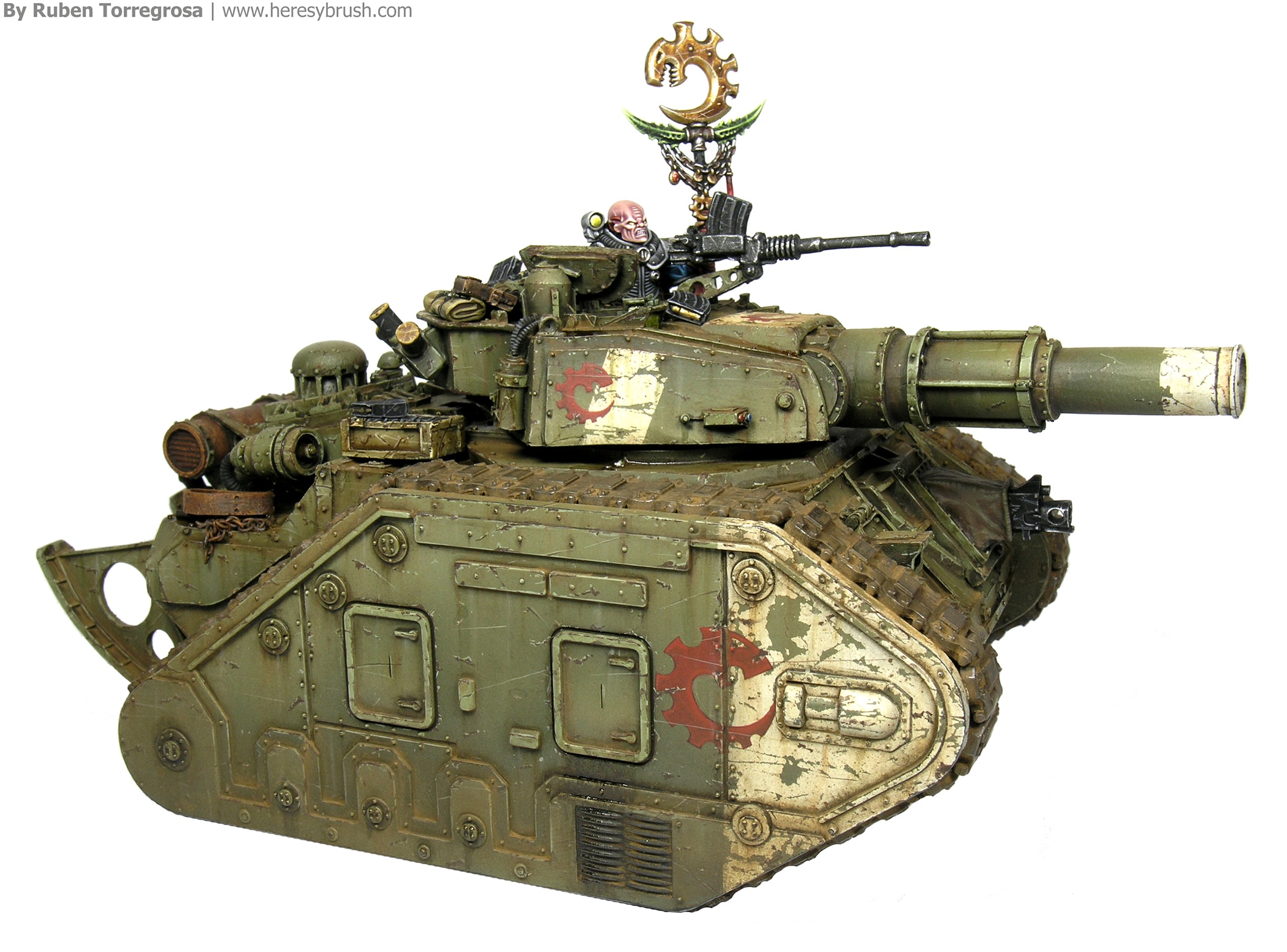
Today I wanted to share with you a painting guide for a Warhammer 40k tank, a Leman Russ for my Genestealer Cult. Ten years ago I gathered around twelve Imperial Guard tanks. I loved them, those enormous and powerful steel monsters. Especially the Forge World versions, more realistic (less toy-like) and charismatic. However, when I was younger I did not spend much time painting these tanks: just with a brush I tried to simulate a simple camo. And that was all. Lately, I could not help feeling gutted about this, since over the last years I have learnt a lot of different techniques to paint tanks, but I had never applied them in one of my beloved tanks. Although I tried something on a small recce vehicle (this Sentinel), I still had the goal of painting a big tank. But now I can say that it is done! It has been difficult because I had to move from painting 15mm tanks to paint this huge monster. The surfaces are bigger, right, and although this makes the painting easier; at the same time, some effects I have learnt must be adapted to this larger scale. I think that I need more practice, especially with the chipping effects. Actually, I have to say that the worst part has been the time required to paint this beast. I usually need a couple of days to paint a tiny 15mm tank. This fella has taken a whole week, including a weekend. But I guess that is matter of practice.
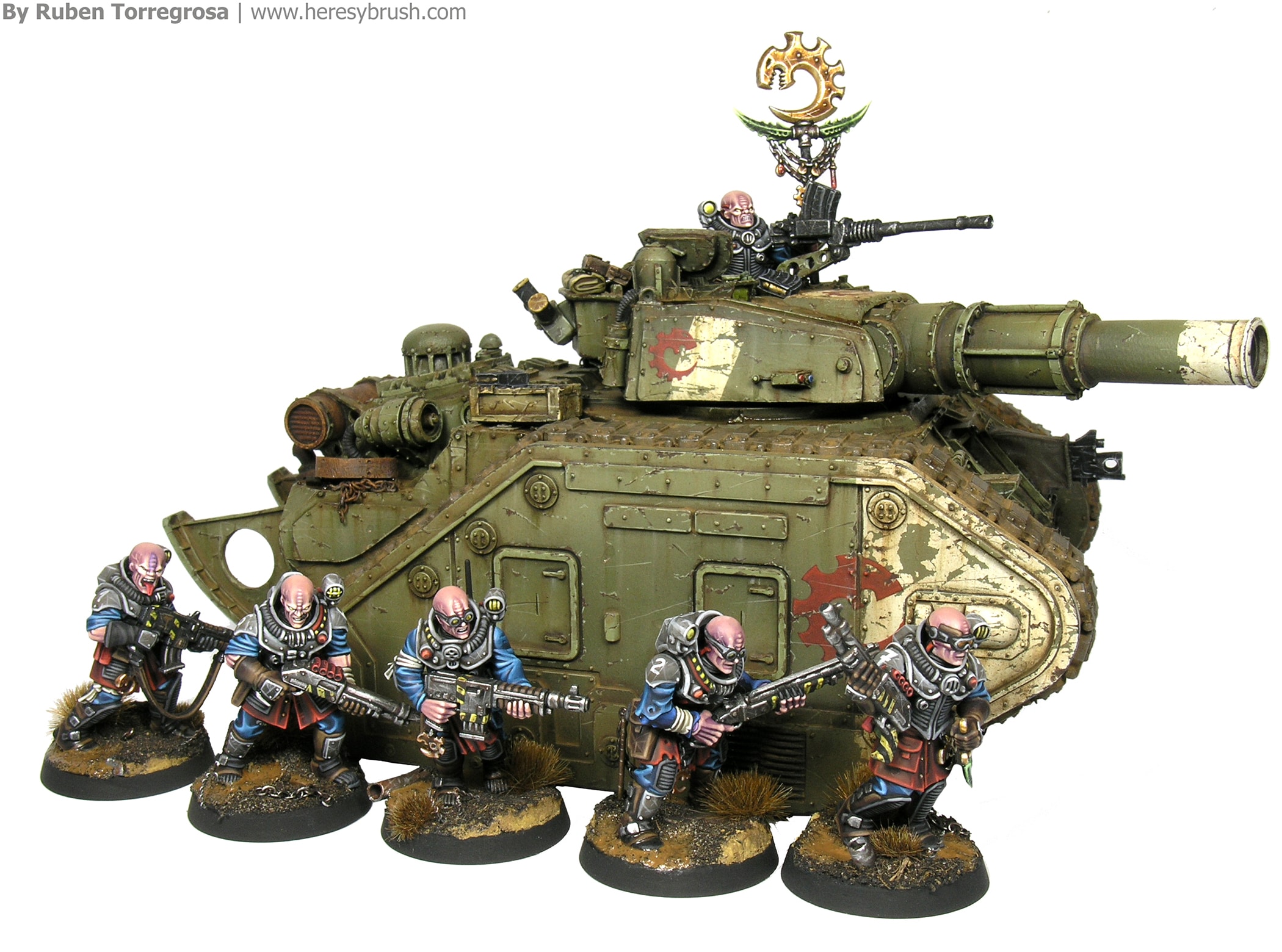 In the following lines you will find how to paint a Leman Russ Mars Alpha pattern from Forge World. I have essentially used acrylics and enamels from AMMO of Mig Jimenez and my lovely Badger Renegade airbrush. For the painting scheme I have followed the same I used on this Armoured Sentinel, which curiously is a copy of the British WWI tanks. For this reason, this painting guide is going to be very similar to this other one I prepared some time ago: how to paint WWI tanks. This another one is also recommendable. It is advisable to go through one of them (or both) before reading this guide, since here I am planning to only give short tips and advice. Full explanations can be found in those other articles.
In the following lines you will find how to paint a Leman Russ Mars Alpha pattern from Forge World. I have essentially used acrylics and enamels from AMMO of Mig Jimenez and my lovely Badger Renegade airbrush. For the painting scheme I have followed the same I used on this Armoured Sentinel, which curiously is a copy of the British WWI tanks. For this reason, this painting guide is going to be very similar to this other one I prepared some time ago: how to paint WWI tanks. This another one is also recommendable. It is advisable to go through one of them (or both) before reading this guide, since here I am planning to only give short tips and advice. Full explanations can be found in those other articles.
Summary
Painting WH40k Tanks:
- Base Coat
- Highlights (color modulation)
- Chipping fluid for white marks
- Decals
- Satin varnish
- Filter
- Wash
- Chipping effects
- Streaking effects (vertical surfaces) + dirty (horizontal surfaces)
- Pigments
- Grease / oil
Remember to wash carefully the resin pieces to remove the mold-releasing agent with water and soap. Then put together all the pieces with cyanoacrylate, which works finely both with plastic and resin parts. Then, apply a generous layer of coat with an airbrush or spray. I used black because whether accidentally part of the paint scratches, the black coat might resemble a real chipping effect. I usually let dry the coat overnight.
I usually follow the color modulation to highlight vehicles (more info here). To summarize it, this technique implies the combination of sharp contrasts between shades and lights in adjacent panels. It supposes the existence of multiple light spots, instead of only one (the sun = zenithal light). We start with the darkest color and subsequently apply the lights. For the shade we can mix Green moss A.MIG 074 with black in the same proportion. Remember to thin the paint with a little bit of thinner.
Now we apply the first highlight directly with Green moss. To achieve sharp contrasts we can use masks: masking tape, paper, blu-tack, etc. It is very important to be accurate when applying these highlights, or we would lose the modulation effect. I mean, try to do not ruin the dark areas when applying the highlights. Remember: combine the shade on one panel with the light on another one to enhance the contrasts. For instance, check the small hatches on the side. I have inverted the orientation of the lights! In the big armored plate the lights are on the top, while in the small hatches the highlights are on the lower part.
Finally, we apply a second highlight with Green moss mixed with white in the same proportion. Once again, we must use masks to protect the shades. In addition, do not cover completely the previous highlight. On the other hand, for a proper blending effect it is important to achieve a gradual change between colors. We accomplish this not only by using three different colors (moss + black > moss > moss + white) but also by playing with the airbrush: the more layers of paint we applied, the more intense is the final color. Play with this!
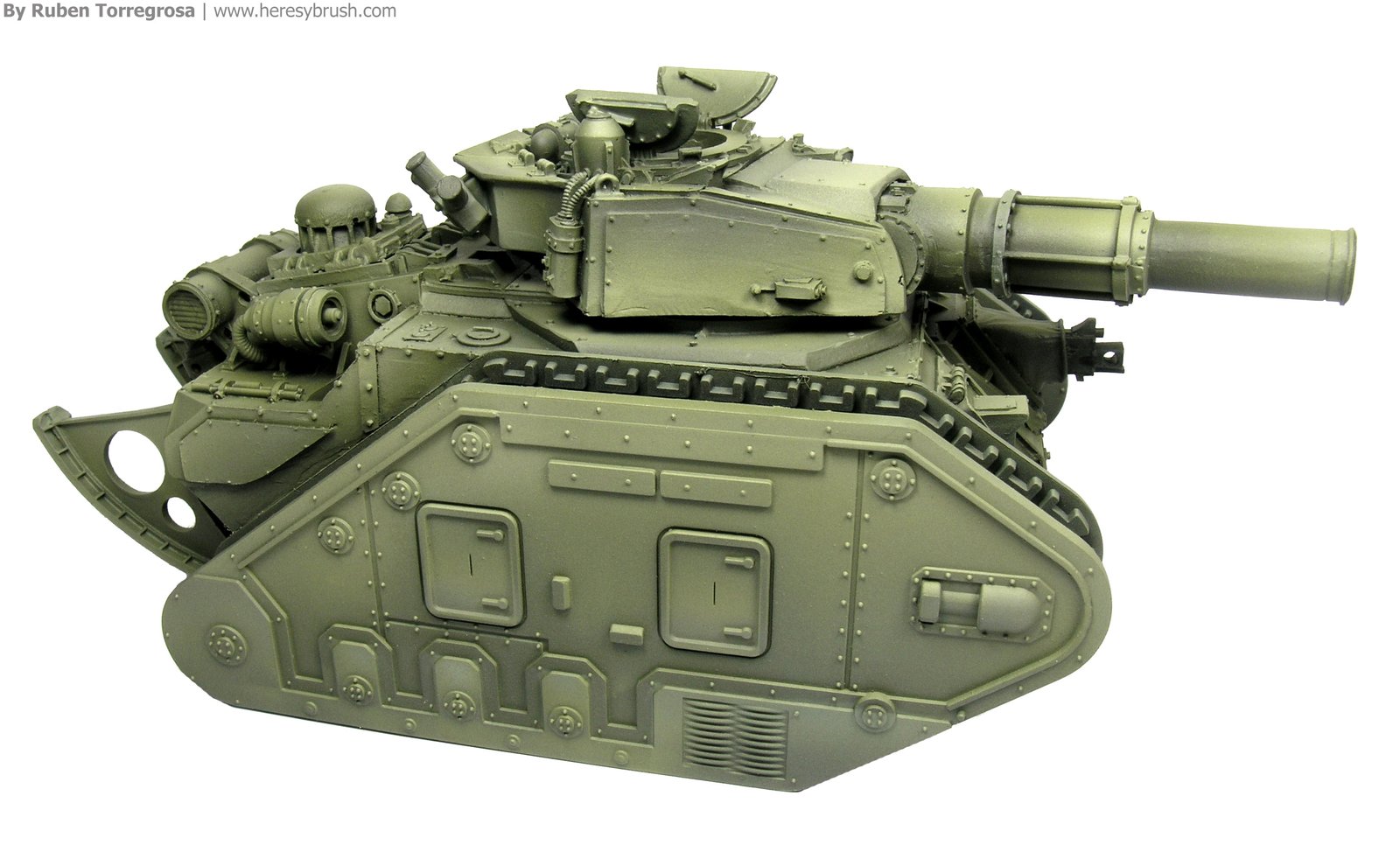 Now we can use the chipping fluid from AMMO to simulate a worn white layer of paint representing the army marks of the vehicle. I have painted the mouth of the battle cannon, some parts of the turret and the frontal area in both sides. You can find more info about this technique here and here.
Now we can use the chipping fluid from AMMO to simulate a worn white layer of paint representing the army marks of the vehicle. I have painted the mouth of the battle cannon, some parts of the turret and the frontal area in both sides. You can find more info about this technique here and here.
For the next step we need a thin brush, which will be used to do two things: (1) we will apply the last highlight with Green moss + white (1:2; the double of white). We use it to paint all the rivets and alike elements on the big surfaces. The idea is to stand out these parts. And (2), we paint the different accessories of the vehicle. For example, I used black to paint different tubes and wires and flat brown to paint the exhausts and a big deposit on the rear (we will add rust to these parts later on).
We can put some decals if we want. I use these ones from Scumb4g Kustoms. To fix and softener them I used Micro SOL and Micro SET products. You can find more info about decal-fixing here and here. I decided to paint on top of the decals with red because of the different backgrounds of the surfaces (green and white) modified a little bit the final color of the decal. And I wanted a homogeneous color.
Now we can start with the weathering effects. But first we need to protect all the work we have done so far. This is very important, so do not skip it! Apply a good layer of satin varnish (acrylic) with the airbrush. I usually wait over night before continuing.
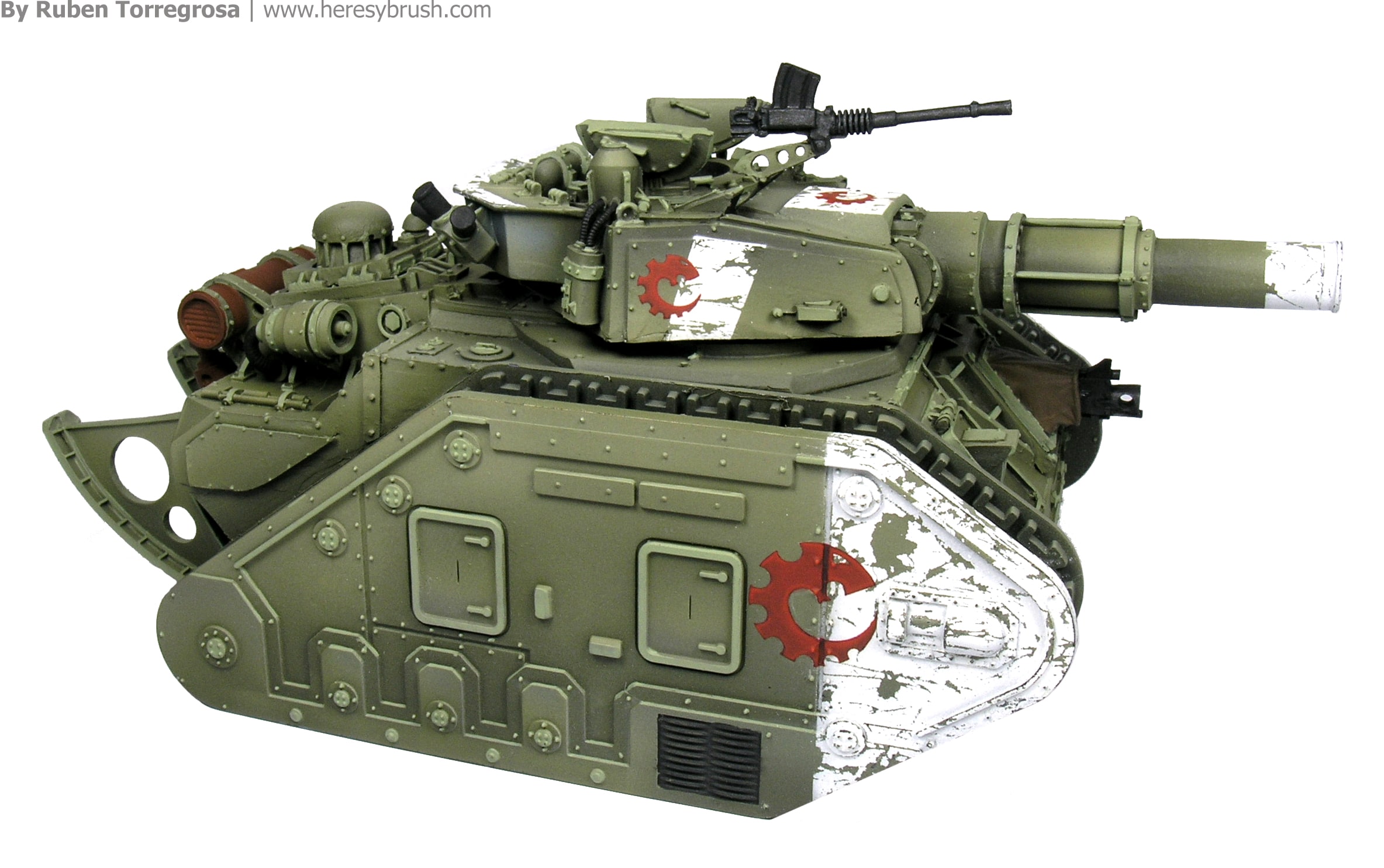 It is important to notice that now we stop using acrylic paints and start using enamels. Acrylics and enamels are DIFFERENT. The former are water-based and the later are oily. Enamels require a thinner such as White Spirit or turpentine to be thinned. We also clean the brushes with this. The very first effect we are going to apply is a brown filter (Tan for 3 Tone Camo, A.MIG-1510) in order to (1) homogenize the different green colors and (2) also add a small brownish effect. Note that although filters are thinned paints, they are not a washes, inks or Citadel shades!!!. Filters and washes are different in composition and way of using (more info here). To apply a filter first we load the brush and next we remove the most part of the paint on a napkin or piece of paper. Only then we apply a thin layer with the remaining paint over the vehicle surface. Never flood the surface!
It is important to notice that now we stop using acrylic paints and start using enamels. Acrylics and enamels are DIFFERENT. The former are water-based and the later are oily. Enamels require a thinner such as White Spirit or turpentine to be thinned. We also clean the brushes with this. The very first effect we are going to apply is a brown filter (Tan for 3 Tone Camo, A.MIG-1510) in order to (1) homogenize the different green colors and (2) also add a small brownish effect. Note that although filters are thinned paints, they are not a washes, inks or Citadel shades!!!. Filters and washes are different in composition and way of using (more info here). To apply a filter first we load the brush and next we remove the most part of the paint on a napkin or piece of paper. Only then we apply a thin layer with the remaining paint over the vehicle surface. Never flood the surface!
Now we apply a wash, such as Dark brown for green vehicles, A.MIG-1005. This time we want to flood the surface. But do not take me wrong. We are going to apply a “pin-wash”, which basically means that we apply the wash ONLY on the recesses. We DO NOT cover the whole tank with the wash. We would ruin it. Thus, with a thin brush we add the enamel wash only on the recesses. It does not matter if you put much paint.
After one hour or so we can remove the excess of the wash with a moistened brush with White Spirit. Load the WS, remove the excess and then with gentle brush strokes remove the excess of wash. I usually do this vertically, from the top to the bottom, to add at the same time some streaking effect. The idea is to leave the dark wash exclusively on the recesses. Note how powerful enamels are: we can still work on them one hour after we added them. This would be impossible whit acrylics, since they dry in a few seconds.
We can divide the chipping effects technique in two steps: first we use a light color and then a dark color. In the first step we use a light color to simulate superficial scratches. We can use the same color we used to paint the last highlight with a brush (green moss + white, 1:2)). We have two tasks to do: (1) apply a profiling on the edges every single armor plate. It helps whether you use the body of the brush hairs instead of the tip (use the brush horizontally). And (2), paint small scratches and chipping effects. For this purpose we use the tip of the brush to paint small spots and thin lines in a random manner, but using the logic. The more exposed is an area to damage, the most worn it would be. For instance, hatches and handlers. I prefer to use a brush instead of a sponge for this technique. With a brush we have the absolute control of the paint. In contrast, with the “sponge technique” we have very little control and the results look to me very artificial; although it might be useful in other circumstances (as we will see). For more info you can check the two articles I referenced at the beginning and this other one.
For the second step we use a dark brown color, such as Chipping A.MIG-044. The idea now is to paint the inner or lower part of some light spots we previously paint. Some of them, no all! We can also add a thin parallel line close to the light ones we painted before. In the case of the edges, we can add here and there some marks with the tip of the brush. Once again, follow the logic. The idea of the dark color is to simulate deepest chipping effects that show the naked steel.
Before I argued against the sponge technique when doing the chipping effects. However, we can use it in some cases. For example, when simulating a very rust part, such as the exhausts. In such a case, we can use different orange and ochre colors to add subsequent layers of rust. I started painting the whole exhausts with flat brown (984, Vallejo). Then I use the sponge technique to add chipping effects with two colors: first with orange brown (982, Vallejo) and then with a dark brown (Chipping A.MIG-044).
We can add streaking effects using enamels. I used three: Streaking rust (A.MIG-1204), Rainmarks effect (A.MIG-1208) and Streaking grime (A.MIG-1203). Use a thin brush to paint vertical lines, from the top to the bottom, combining these three colors. The streaking effect can start from a rivet, a chipping effect, or just from the top. We only add these stripes on vertical surfaces. You can use different colors depending on the environment where the tank is fighting.
After 5 minutes, use a moistened brush with White Spirit to blend the enamels. Use vertical strokes, from the top to the bottom.
We can use the same enamels to add some details or interest parts on the horizontal surfaces. Here we cannot simulate streaking effects. Instead, we simulated dirty. Add a little bit of the enamel and after five minute blend the edges with White Spirit. Wait overnight before continuing.
Next step includes pigments. We can mix several pigment colors to enrich the final results, and then dissolve them with White Spirit in order to prepare a kind of wash. Then we apply this wash around the horizontal surfaces (especially around the details or in the corners) and also on the lower part of the sides or any part close to the soil / tracks.
Wait a couple of hours until the White Spirit is totally evaporated. Then, use an old brush or cotton swab to carefully remove the most part of the pigments, which is going to be retain basically only on the recesses. At this point I glued the already painted tracks.
Finally, we can add a little bit more of interest to our tank using an oil or grease effect, with Fresh engine oil A-MIG-1408. This effects fits nicely with the pigments: the oil effect is gloss while pigments are ultra matt. We can thin this enamel with a little bit of White Spirit if we want a weaker glossy effect. In any case, we can add oil stains in different places of horizontal panels or even streaking effects on vertical surfaces. Use the logic.
We can also add some accessories such as ammo crates, blankets, bags, etc. It is advisable to paint them separately because it is easier to paint both the tank and the accessories. But remember to apply similar weathering effects on these pieces.
Tracks
- Airbrush a brownish color
- Apply a dark brown wash such as Dark Brown A.MIG-1005
- Apply a mix of pigments dissolve with White Spirit (as we saw)
- Wait until the WS is totally evaporated and remove the excess of pigment with a cotton swab
- Use a graphite pen to stand out the edges
Galery
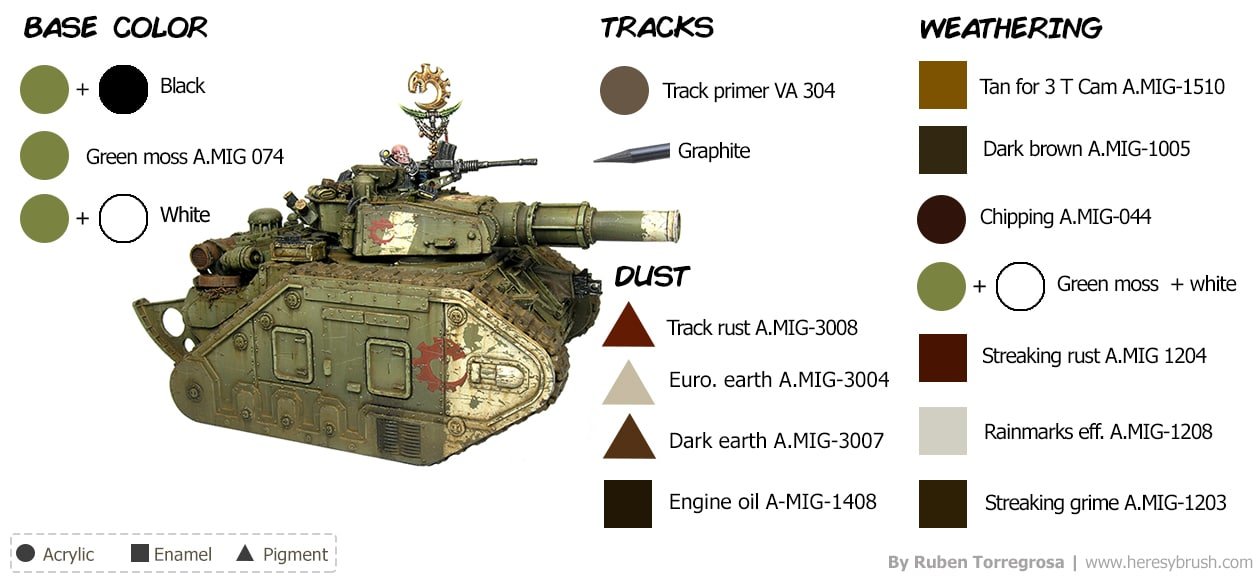
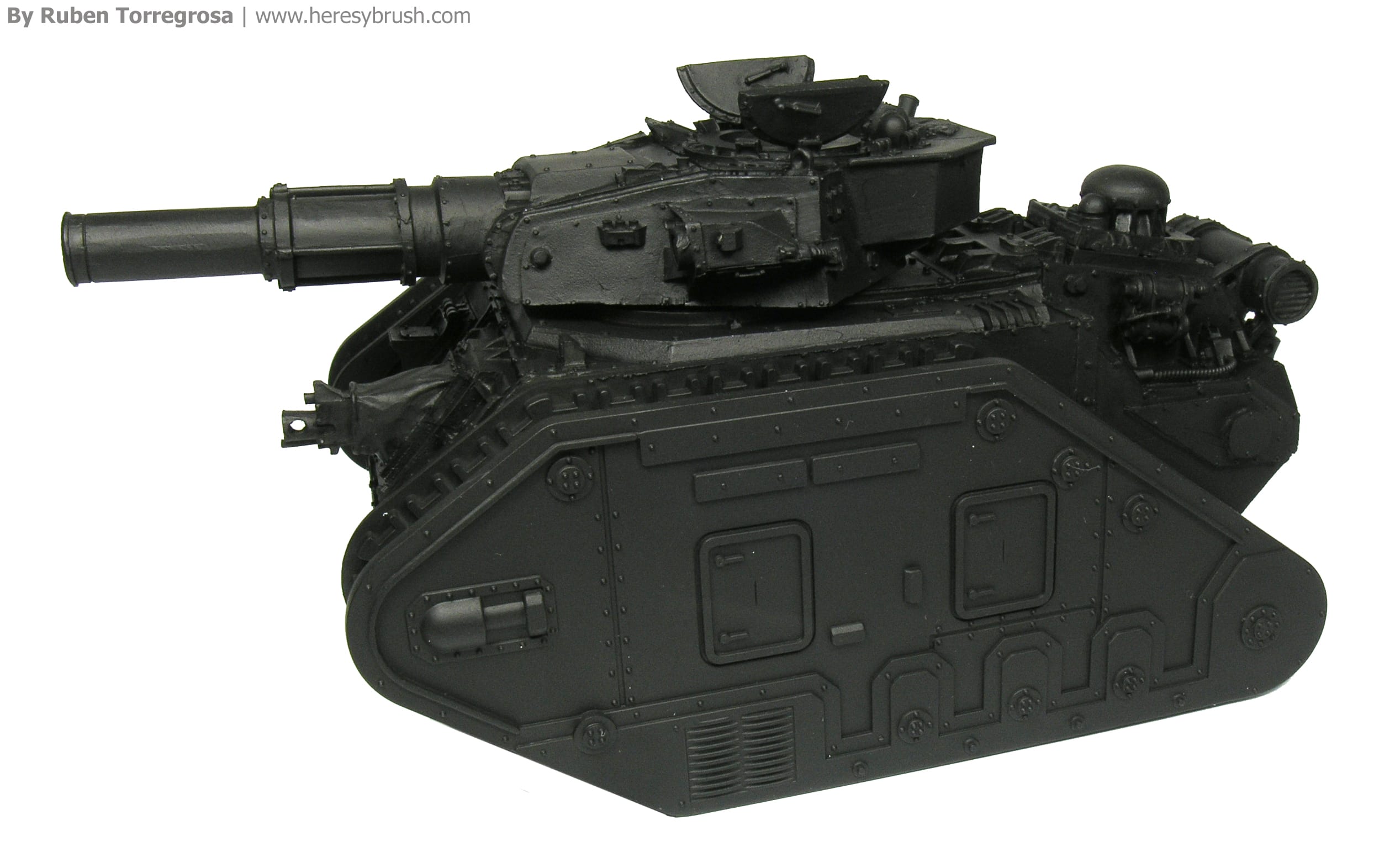
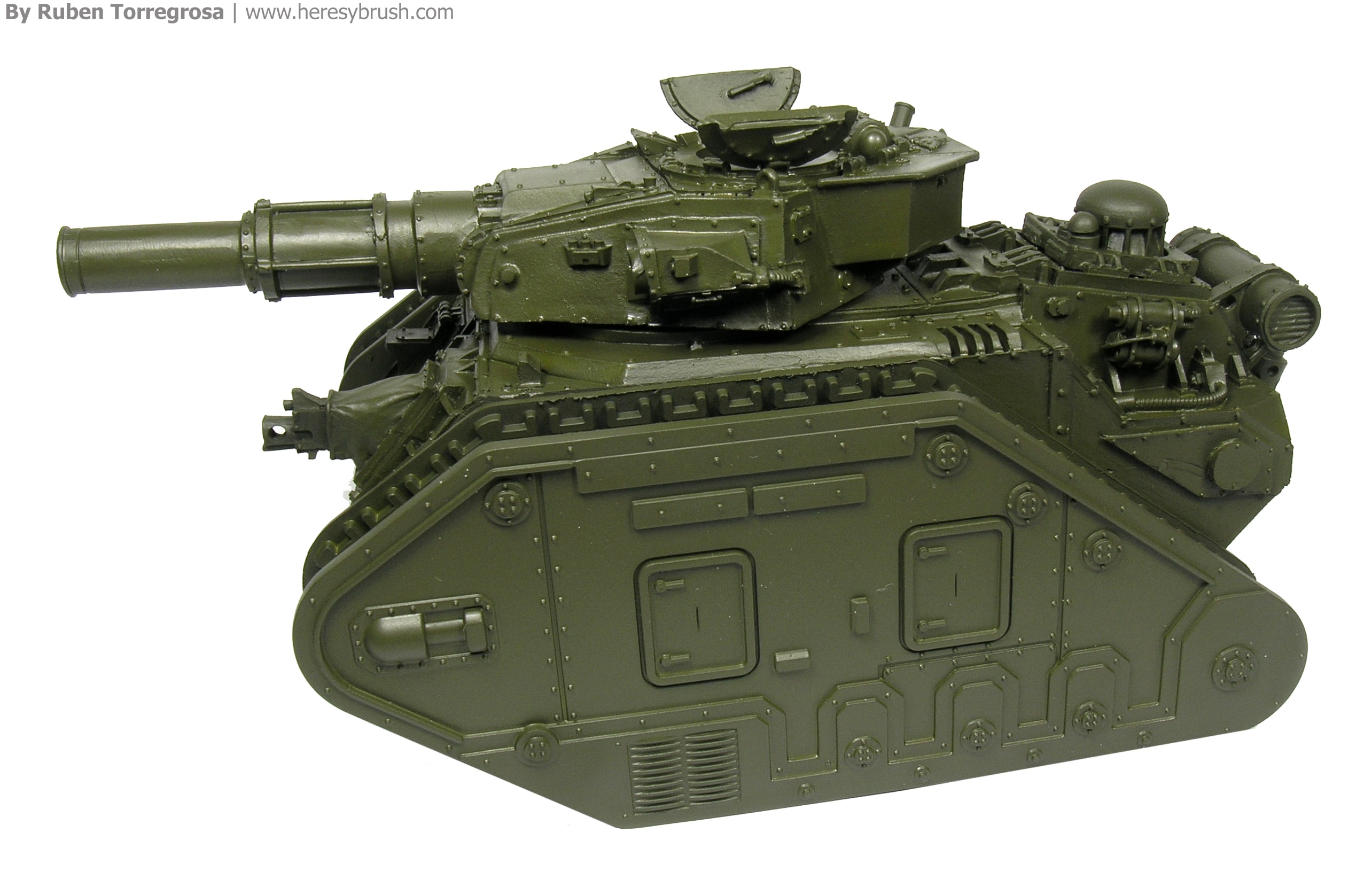
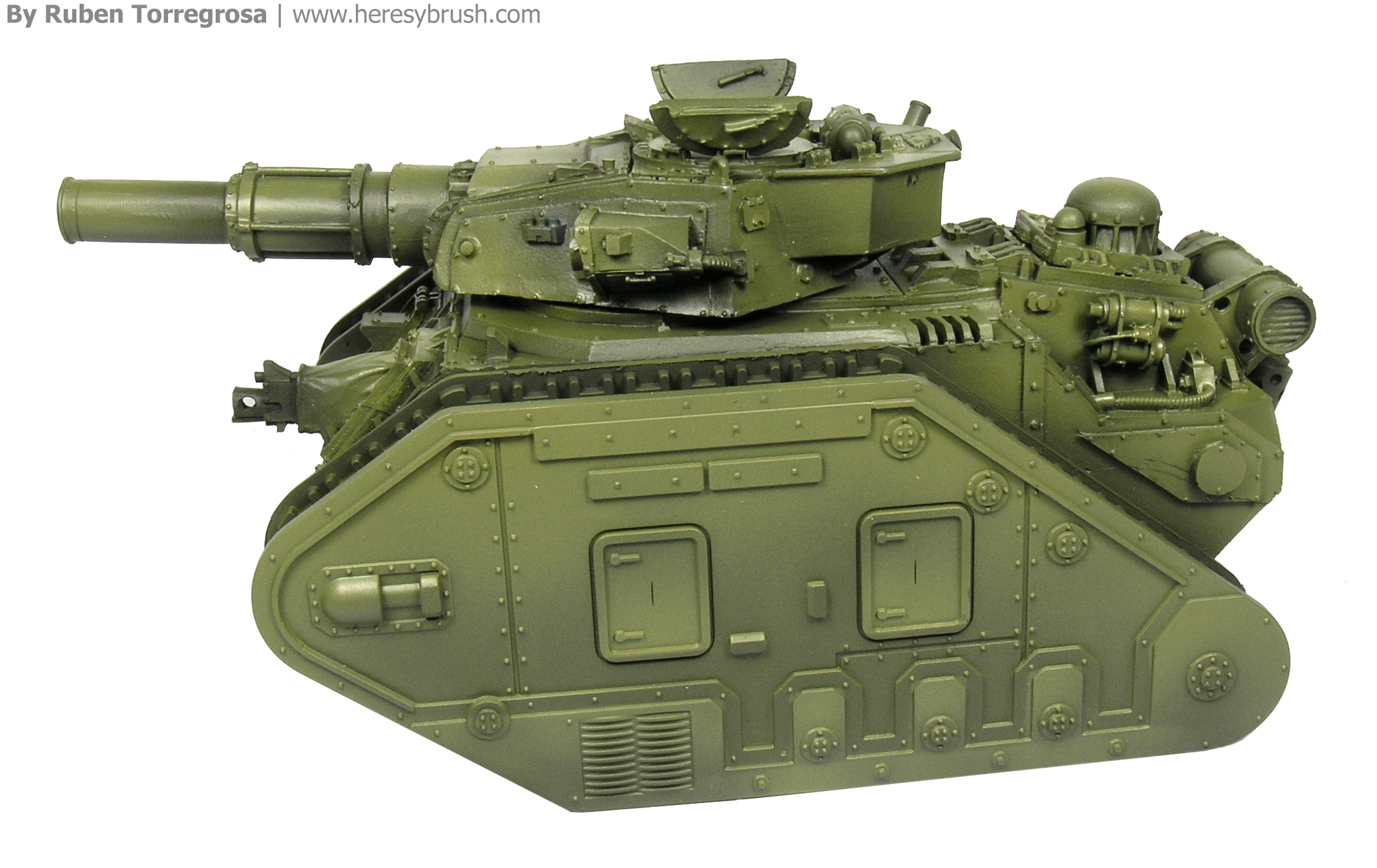
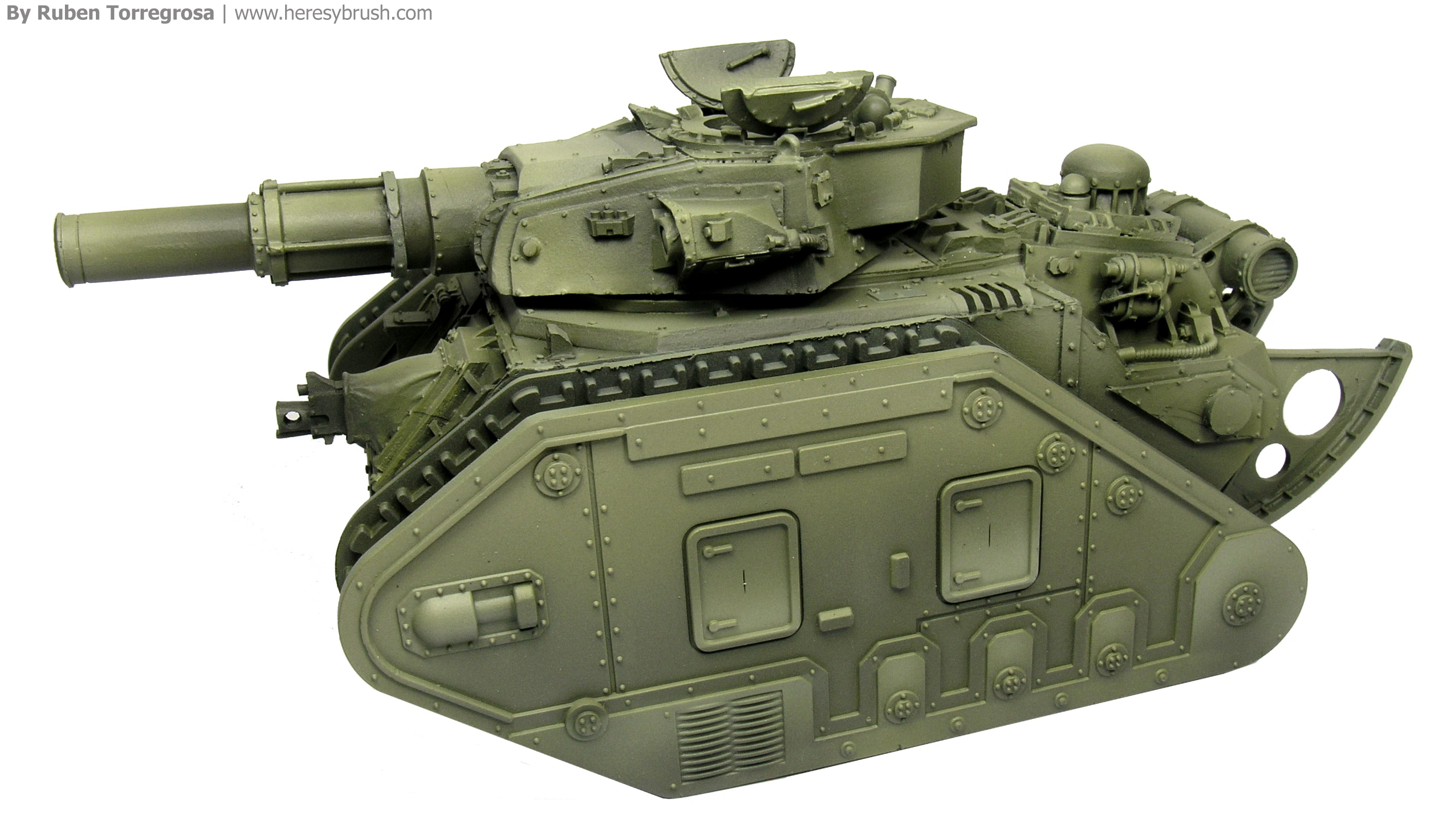
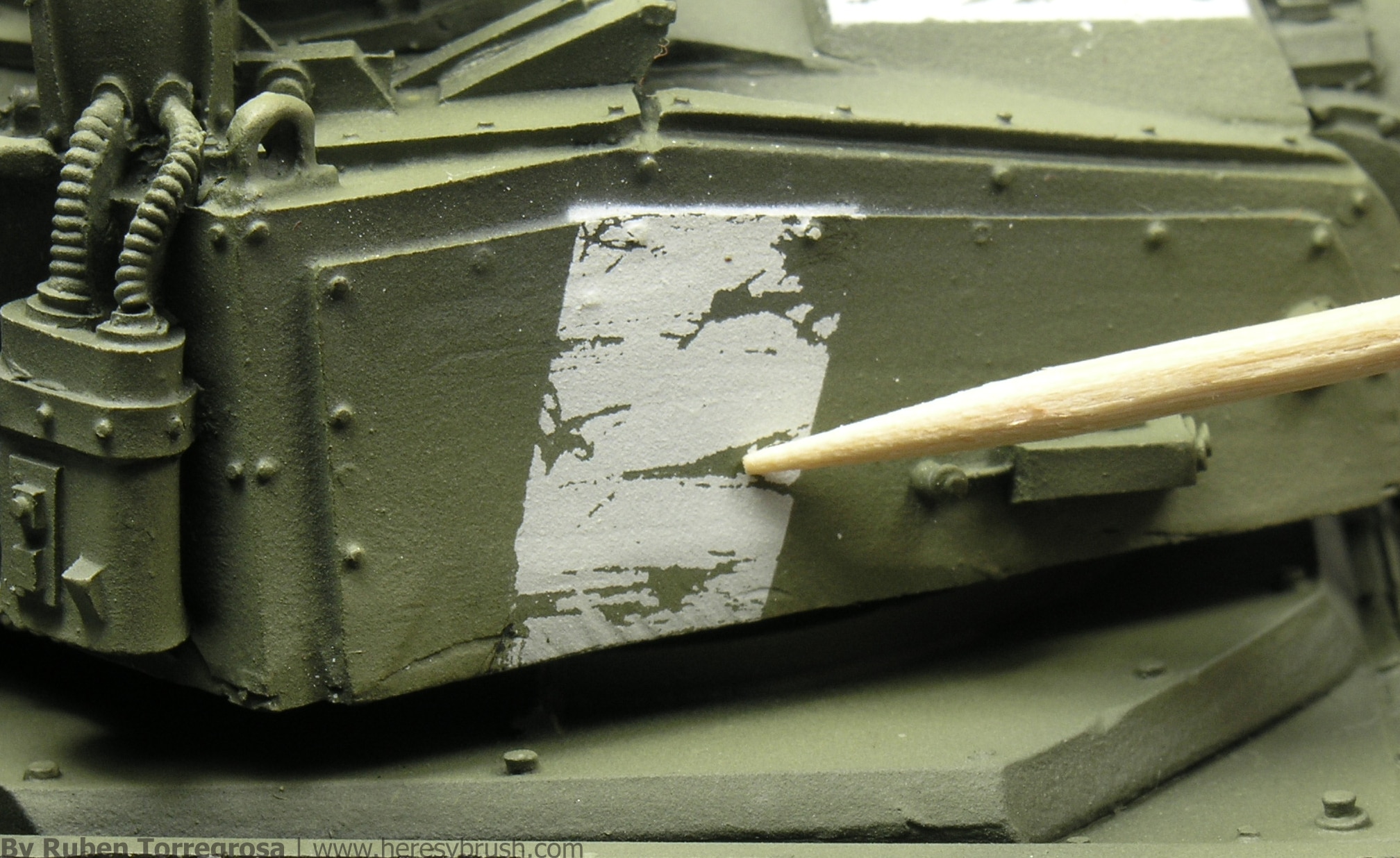
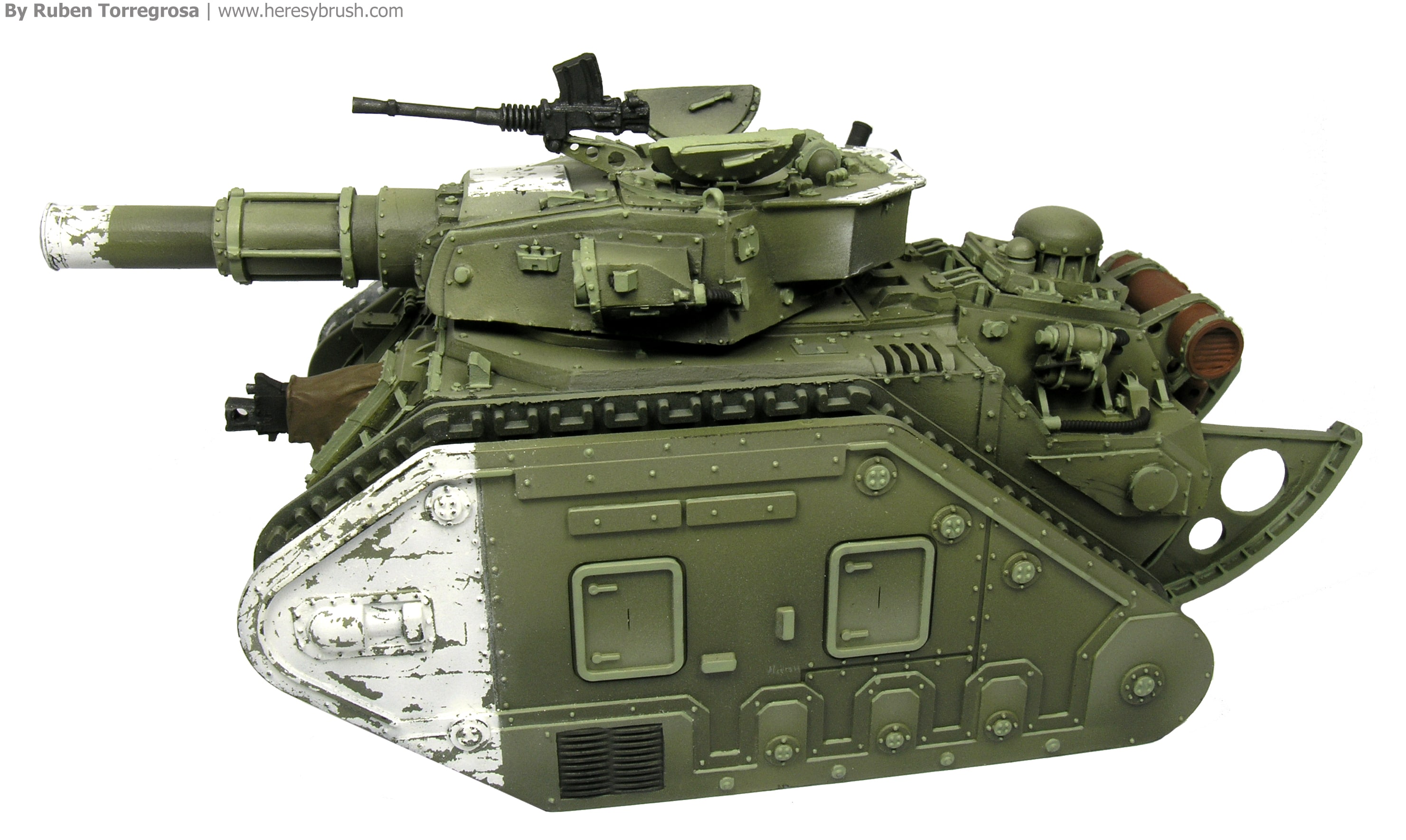
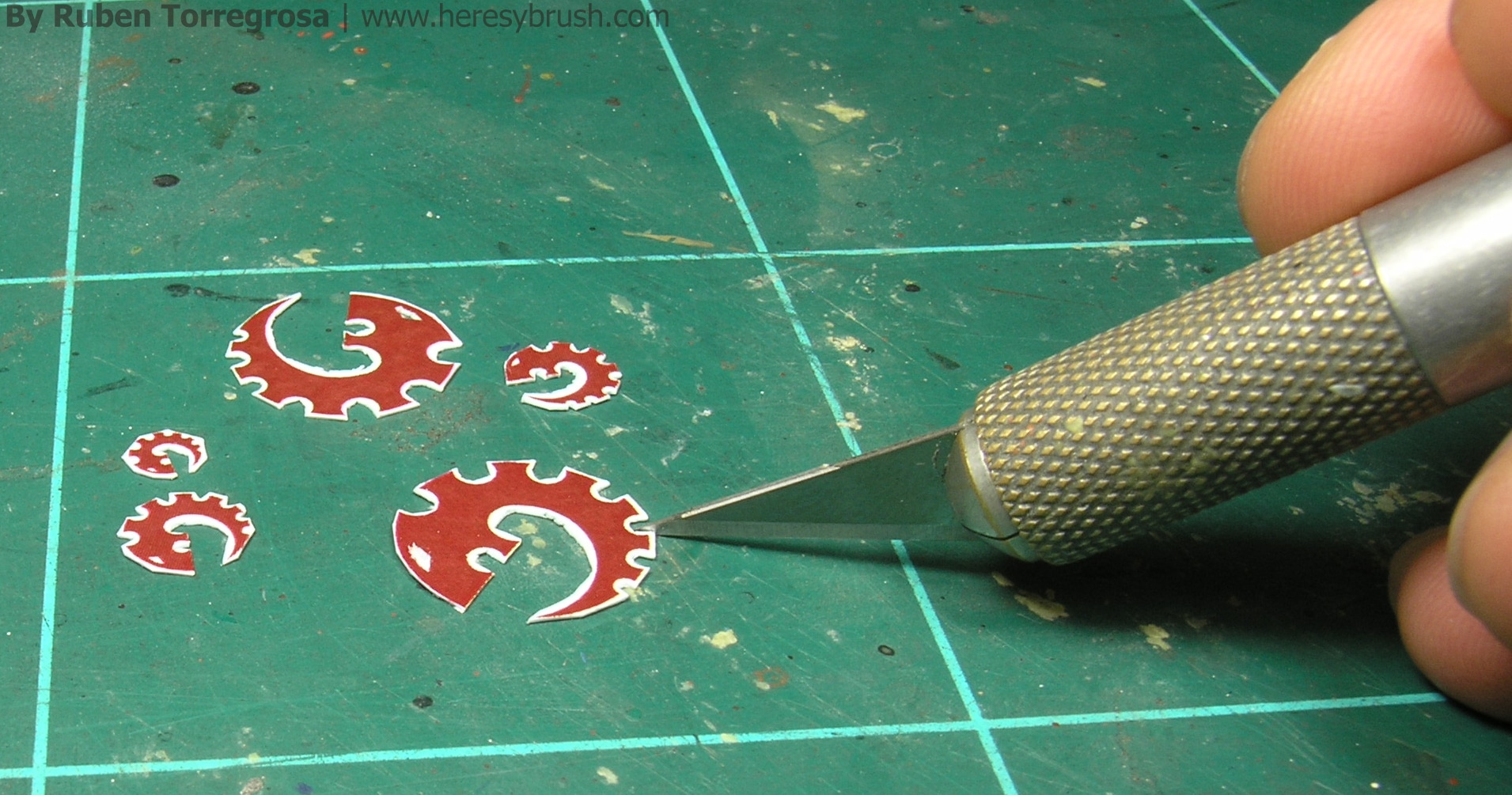
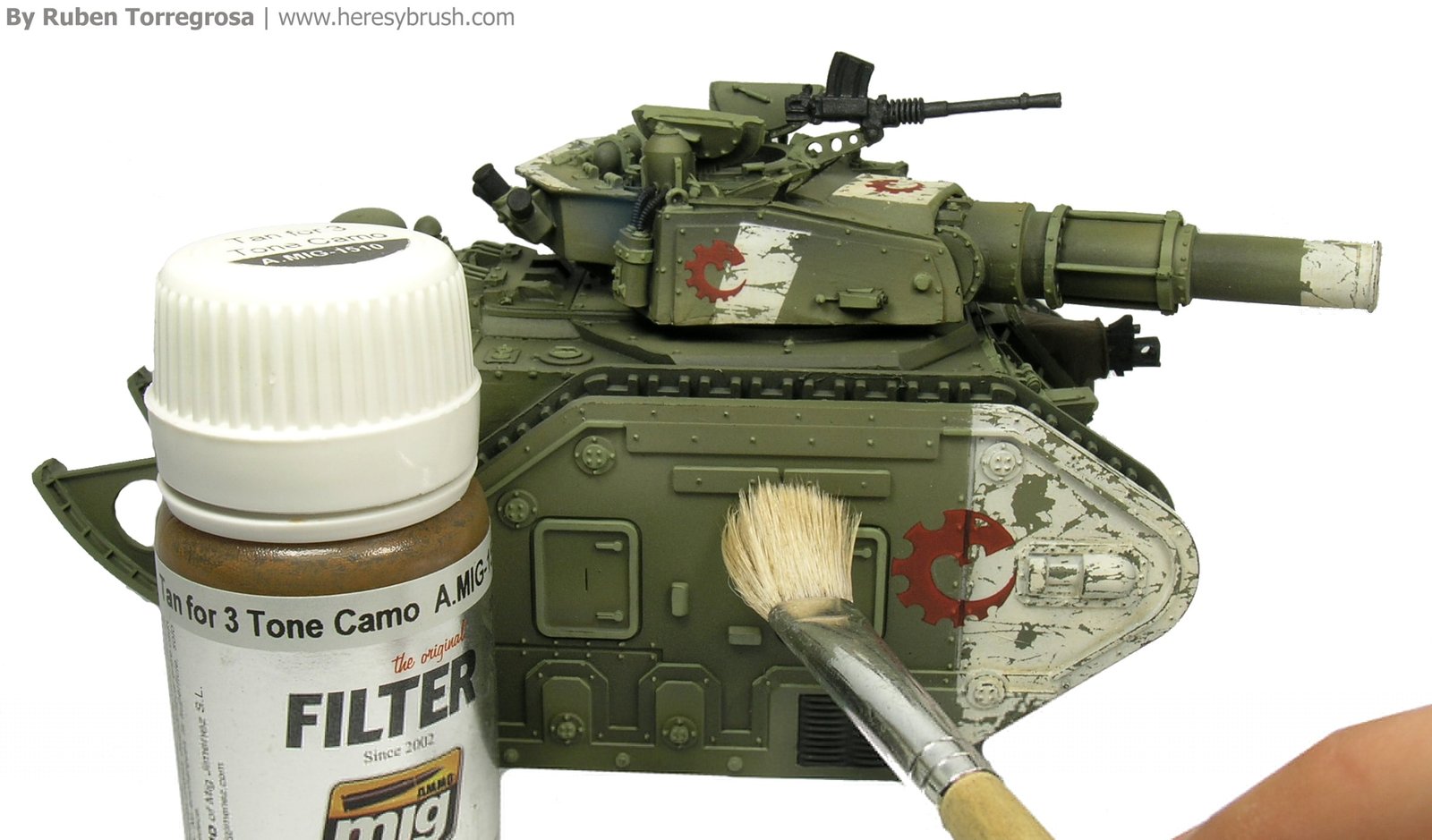
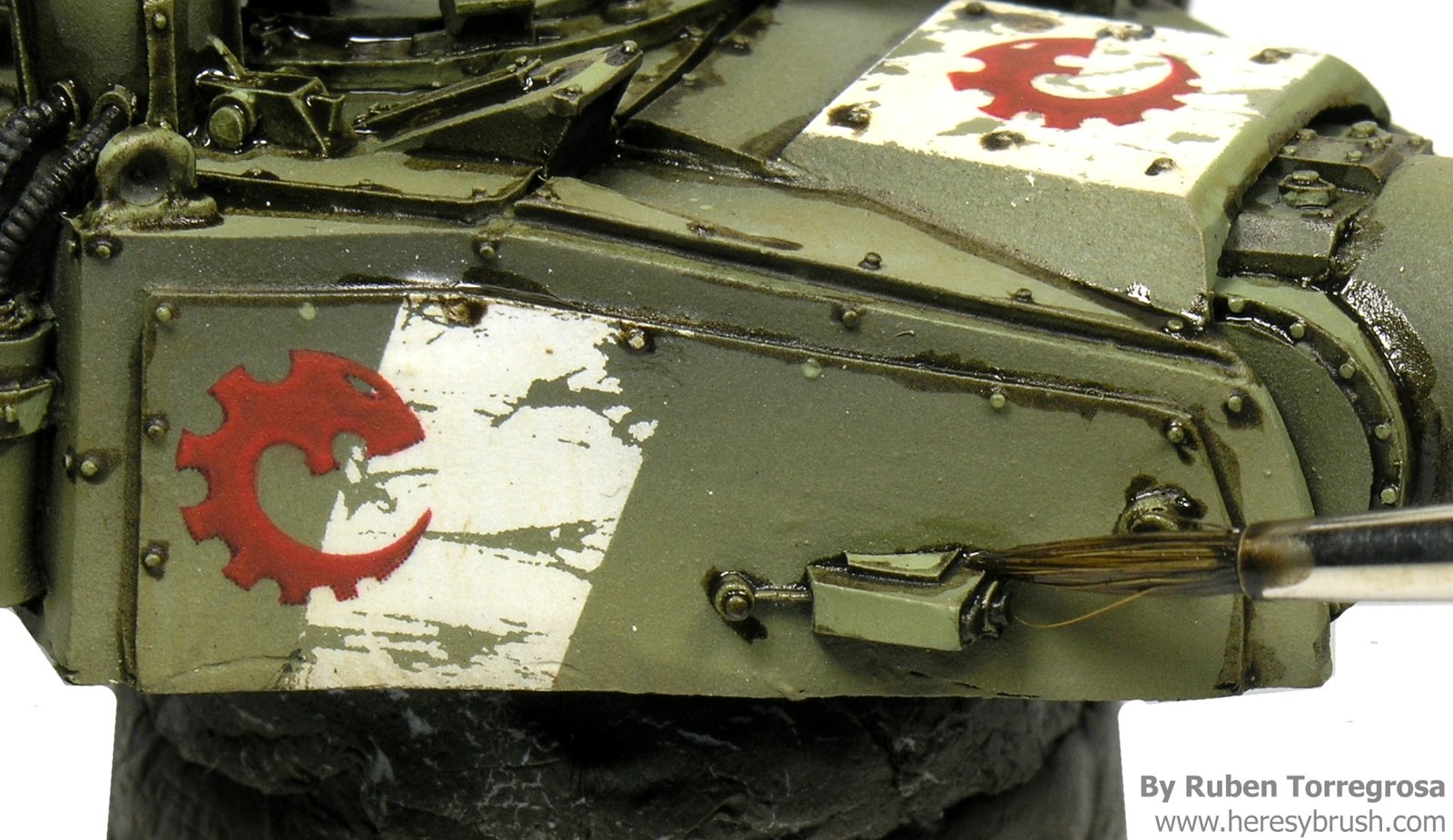
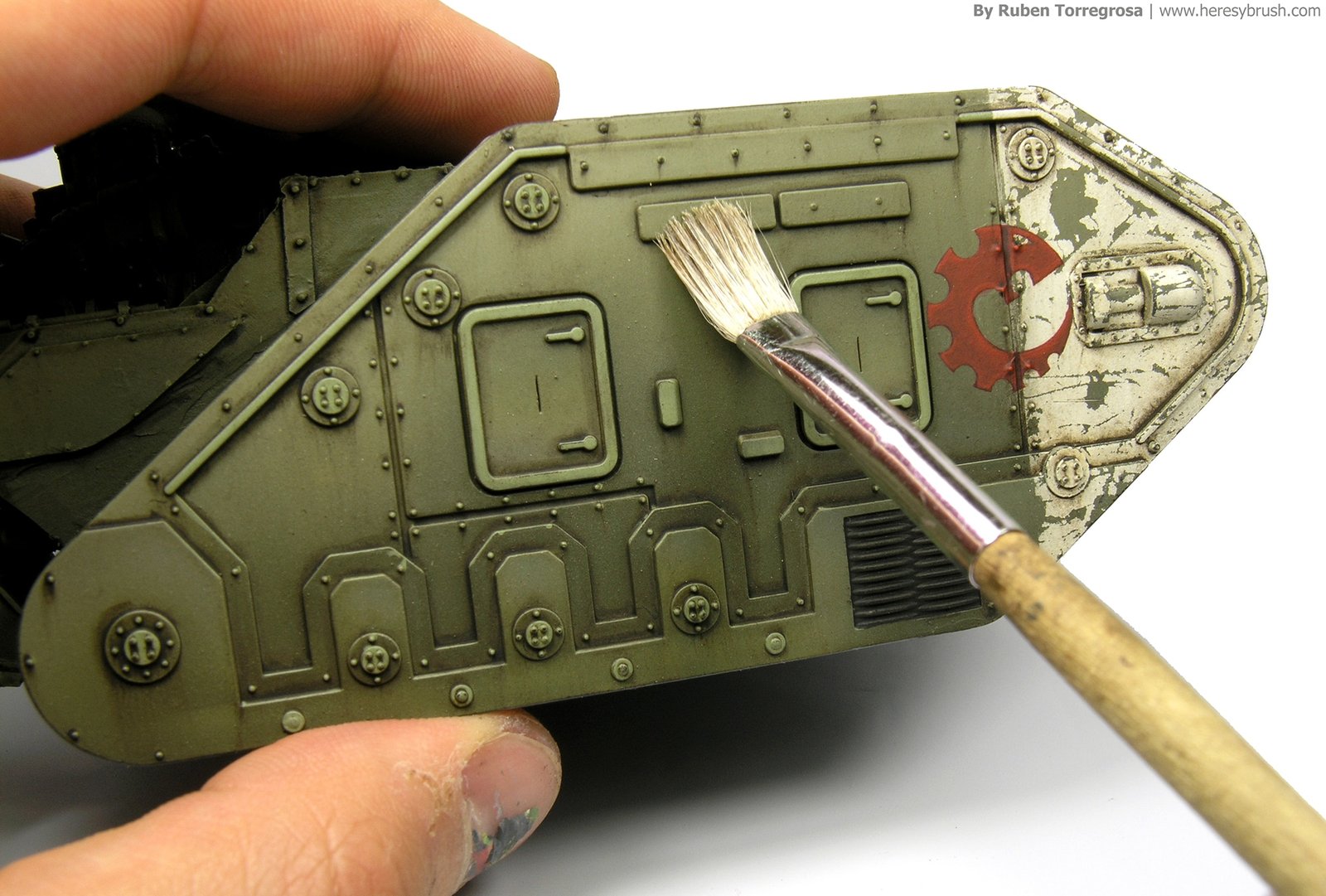
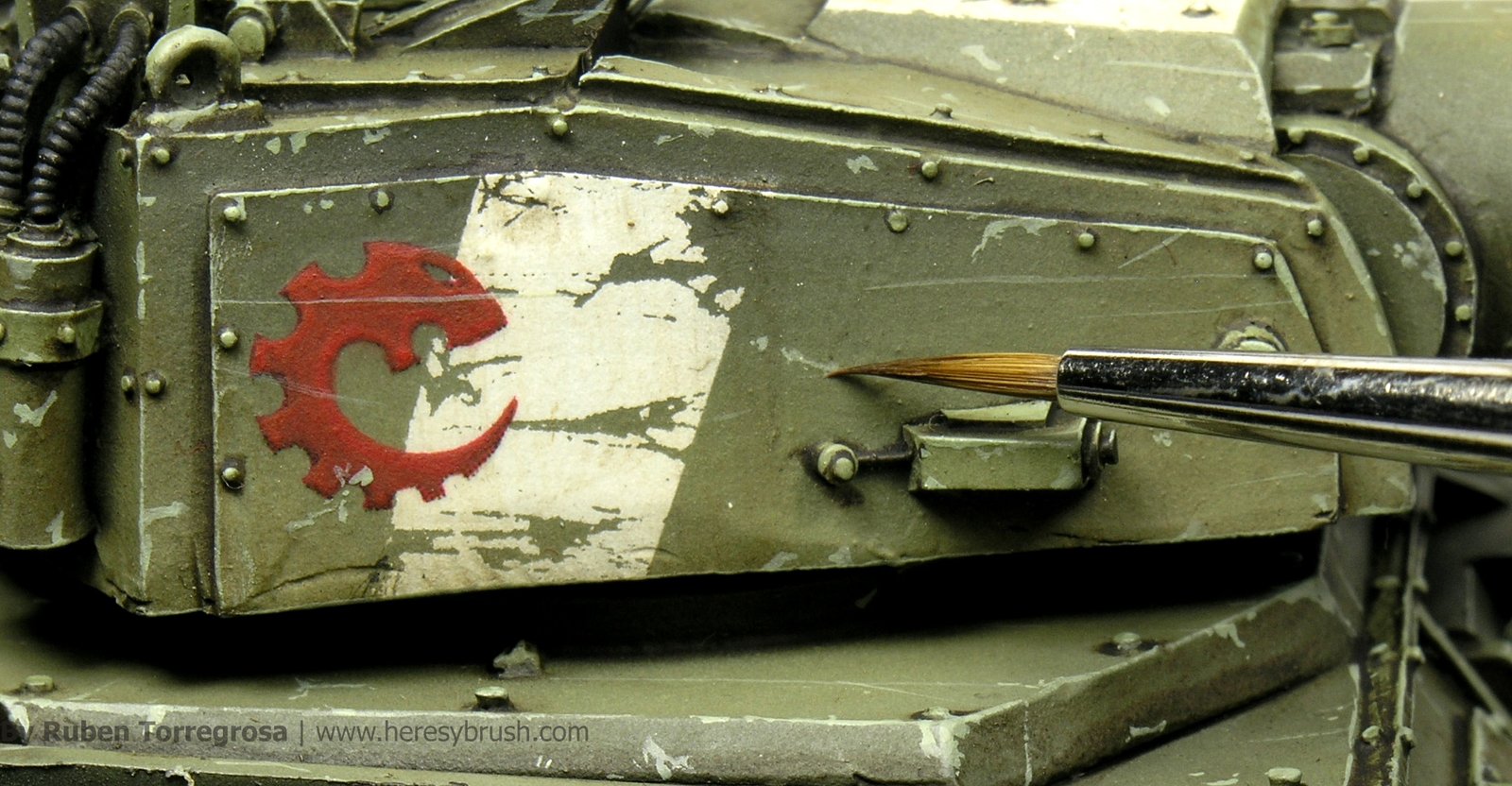
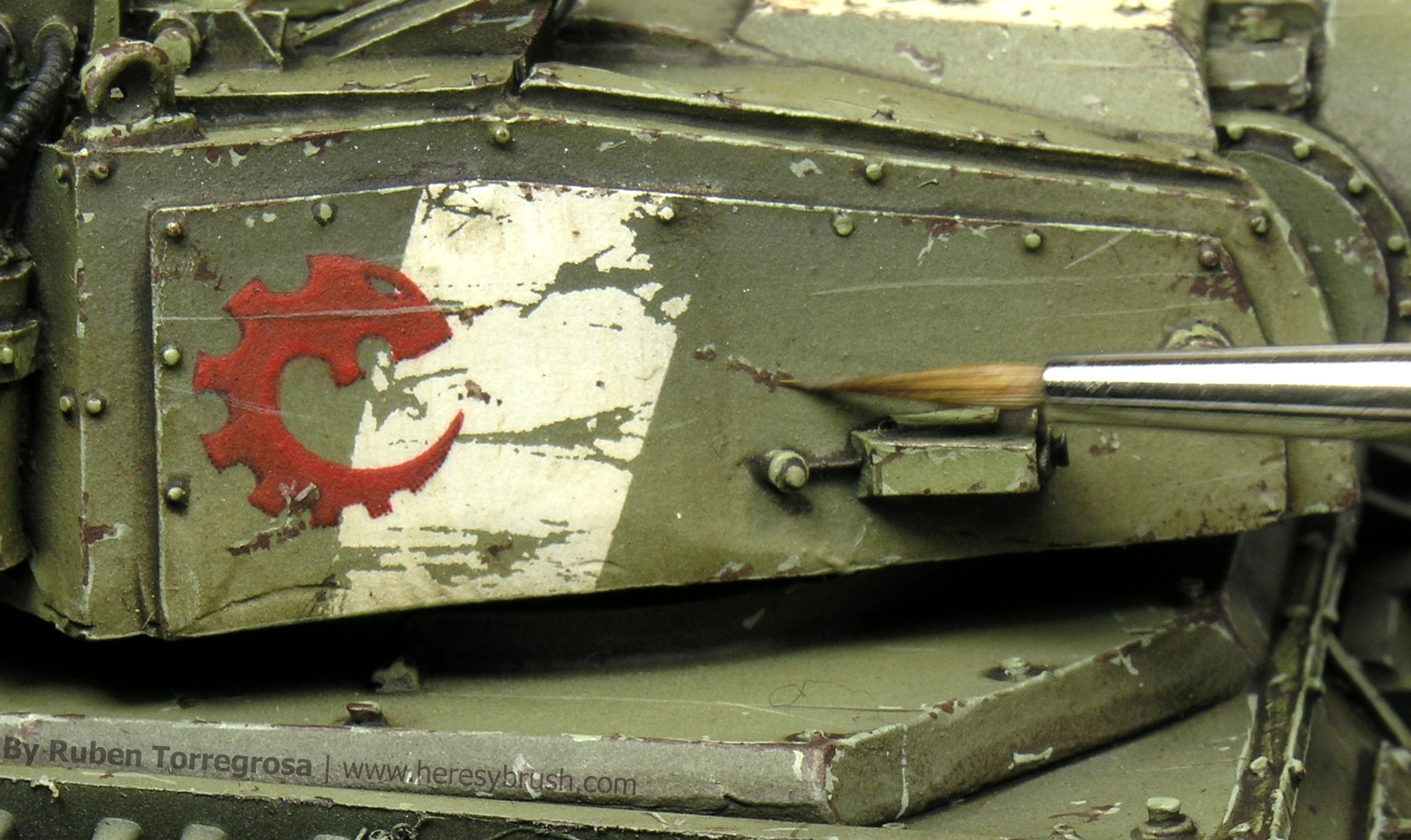
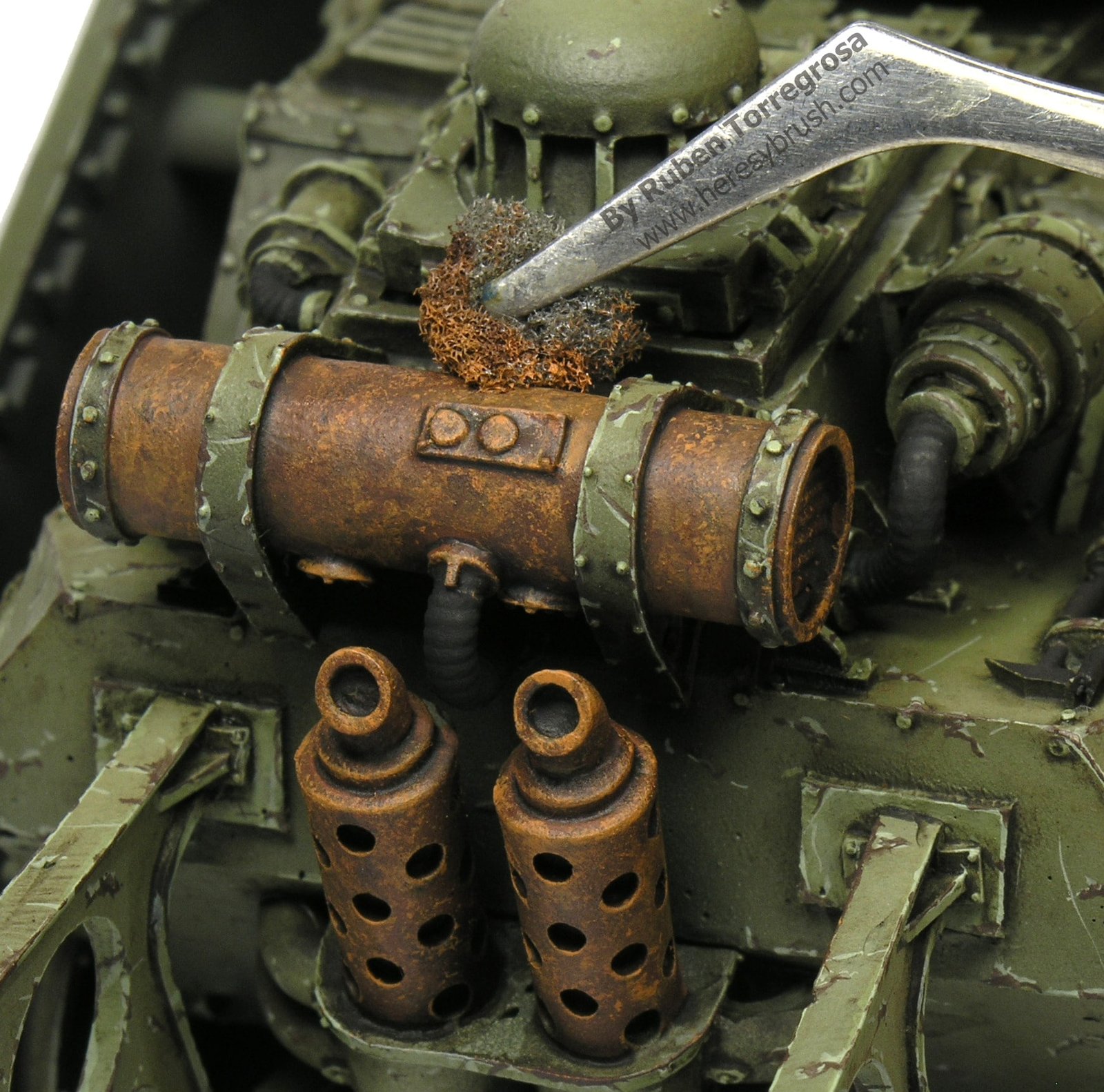
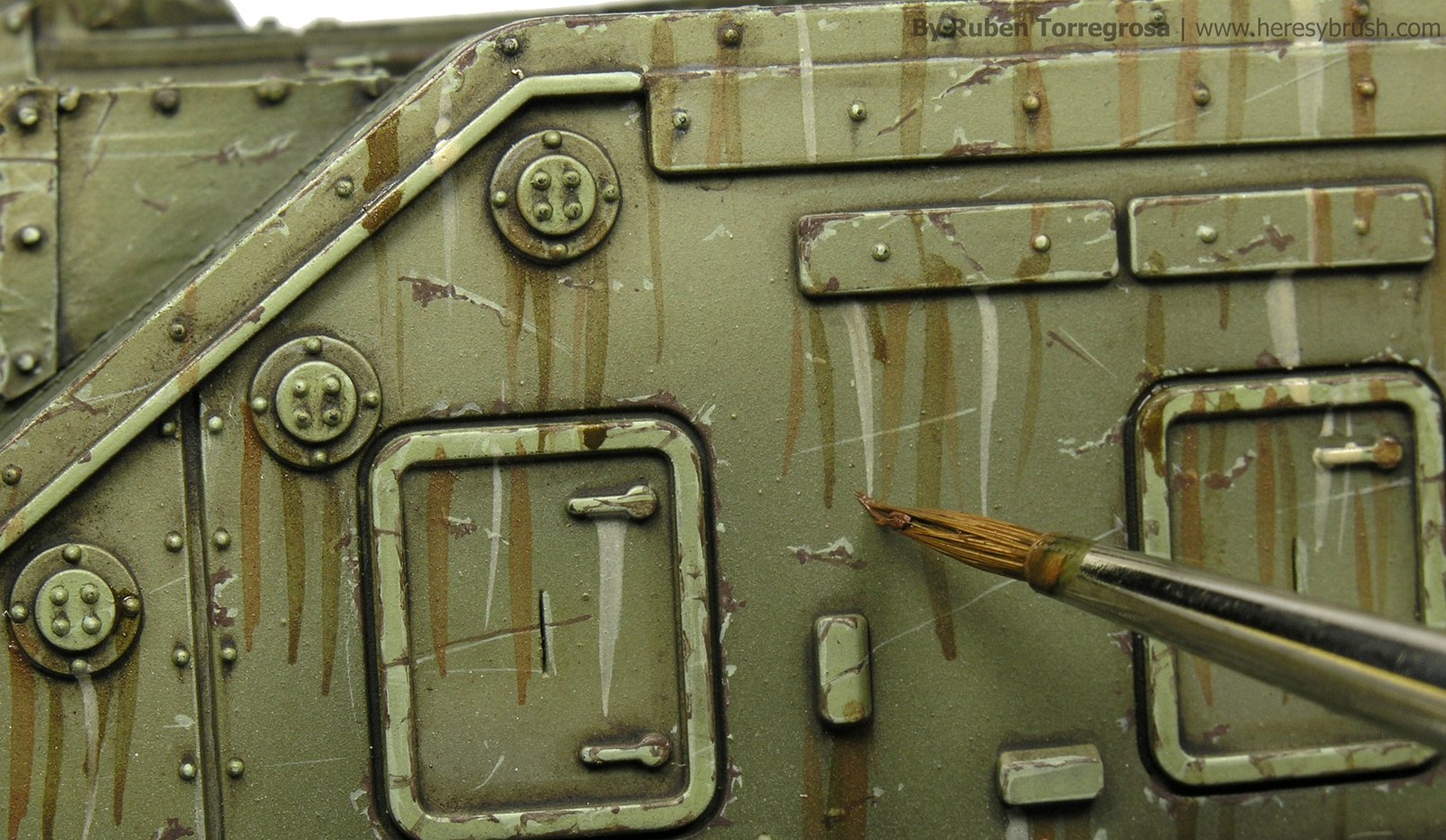
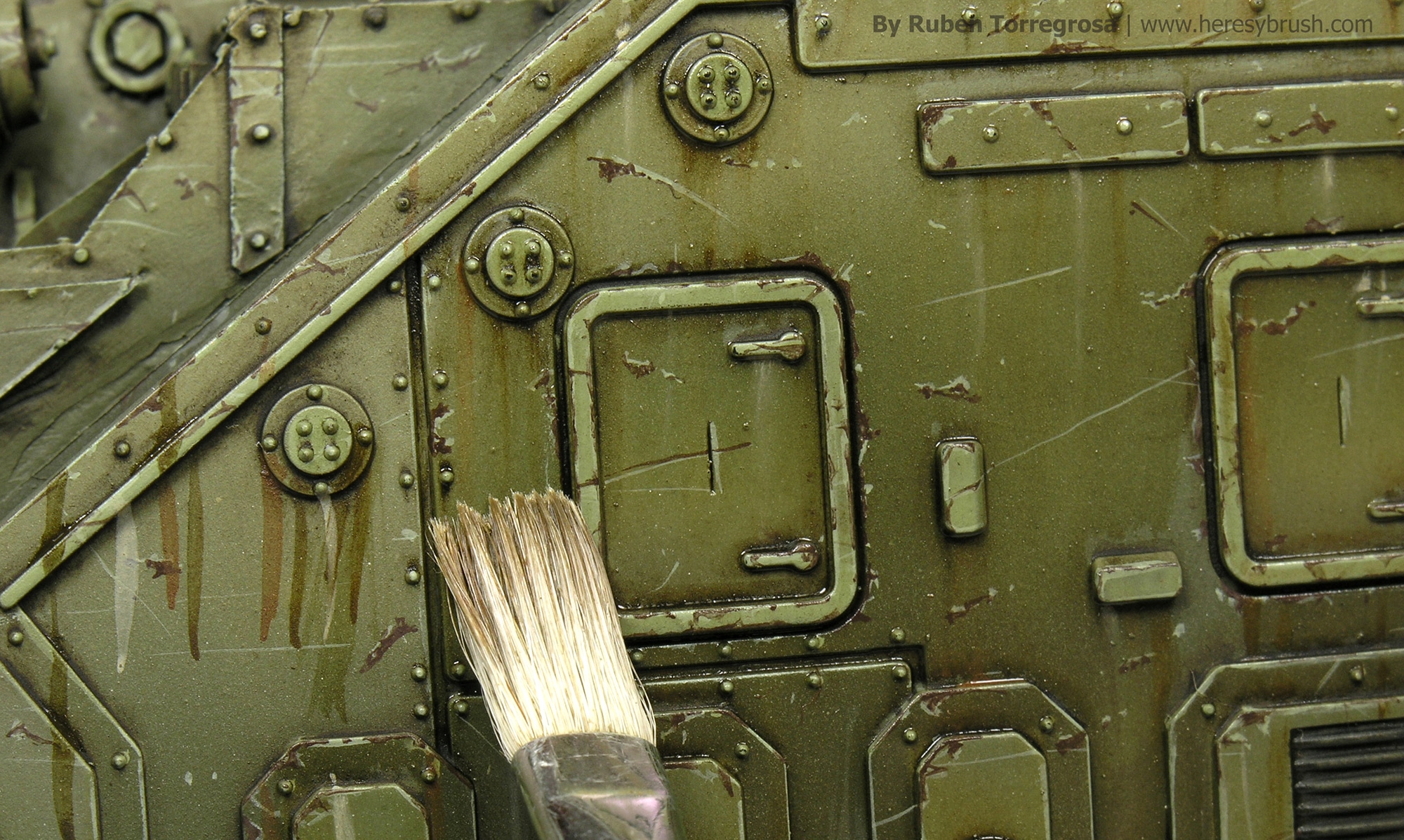
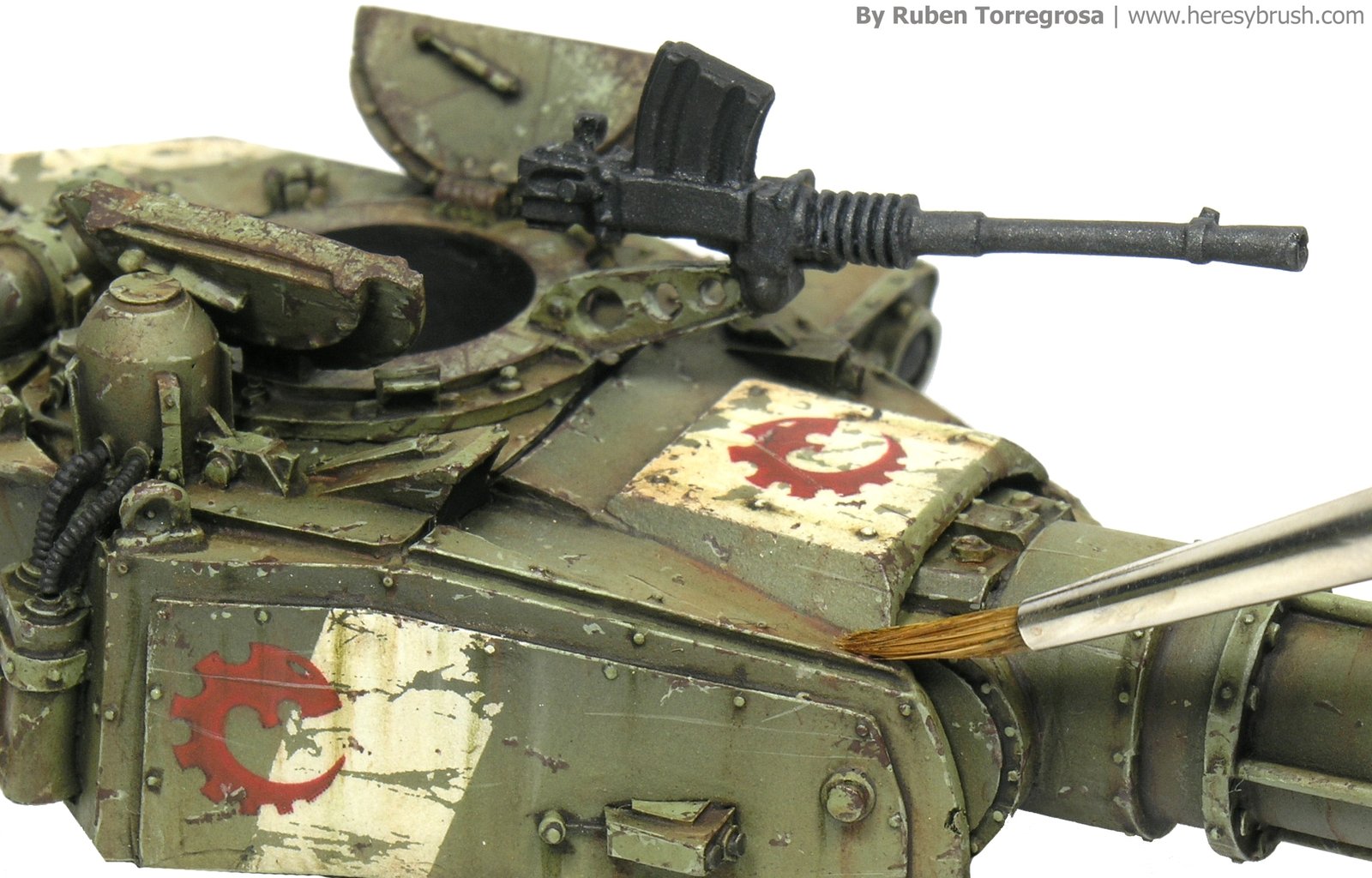
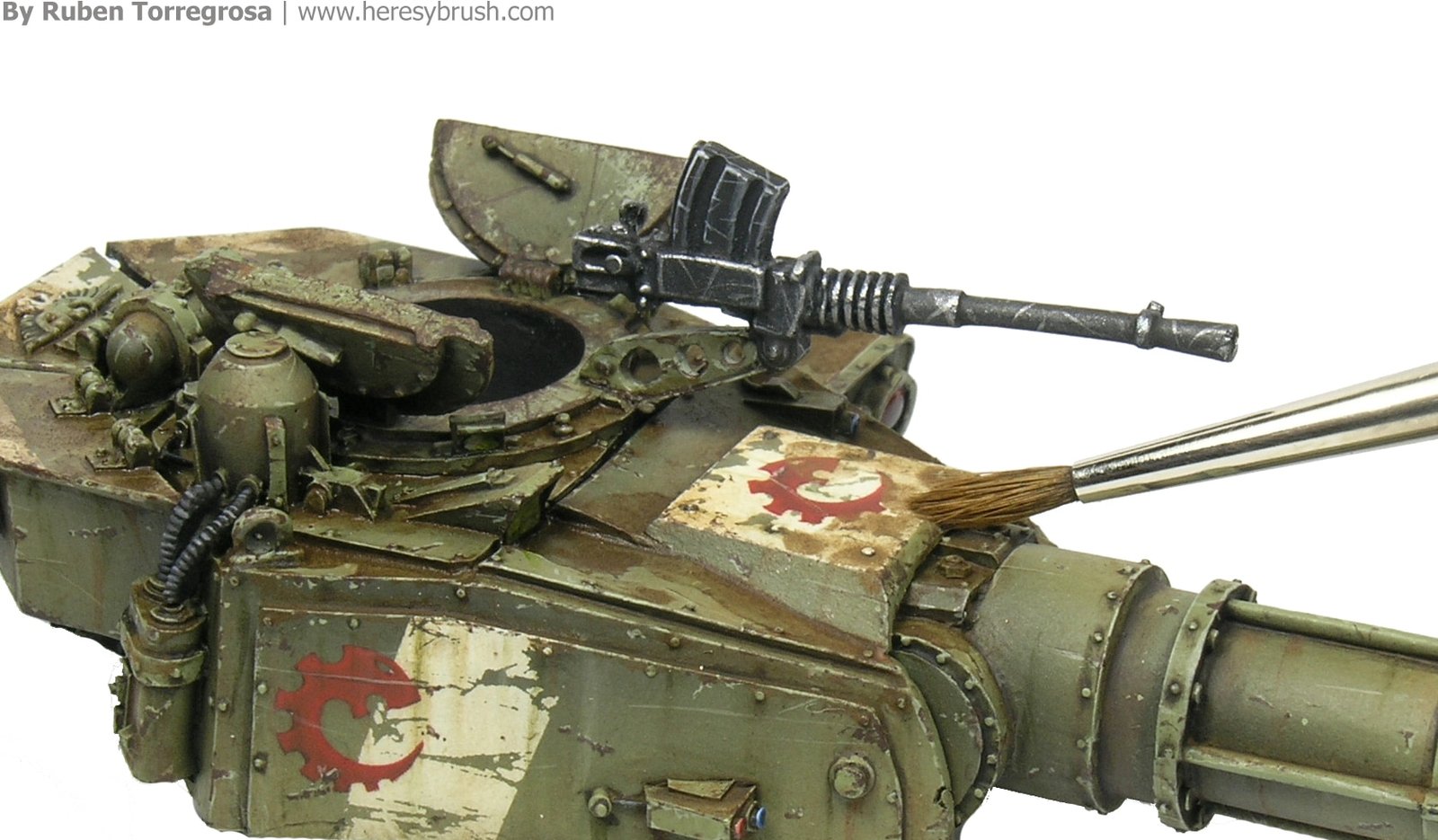
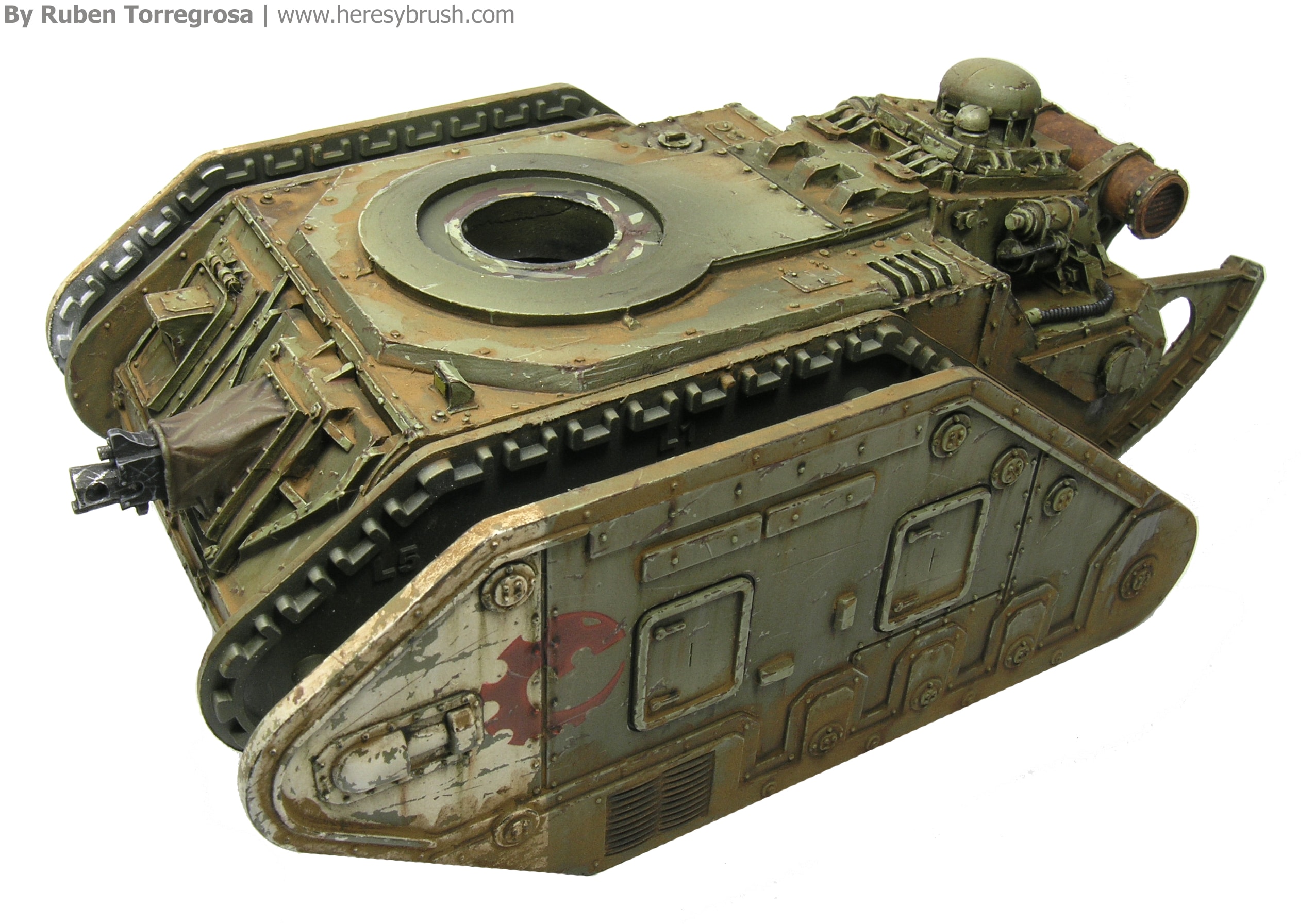
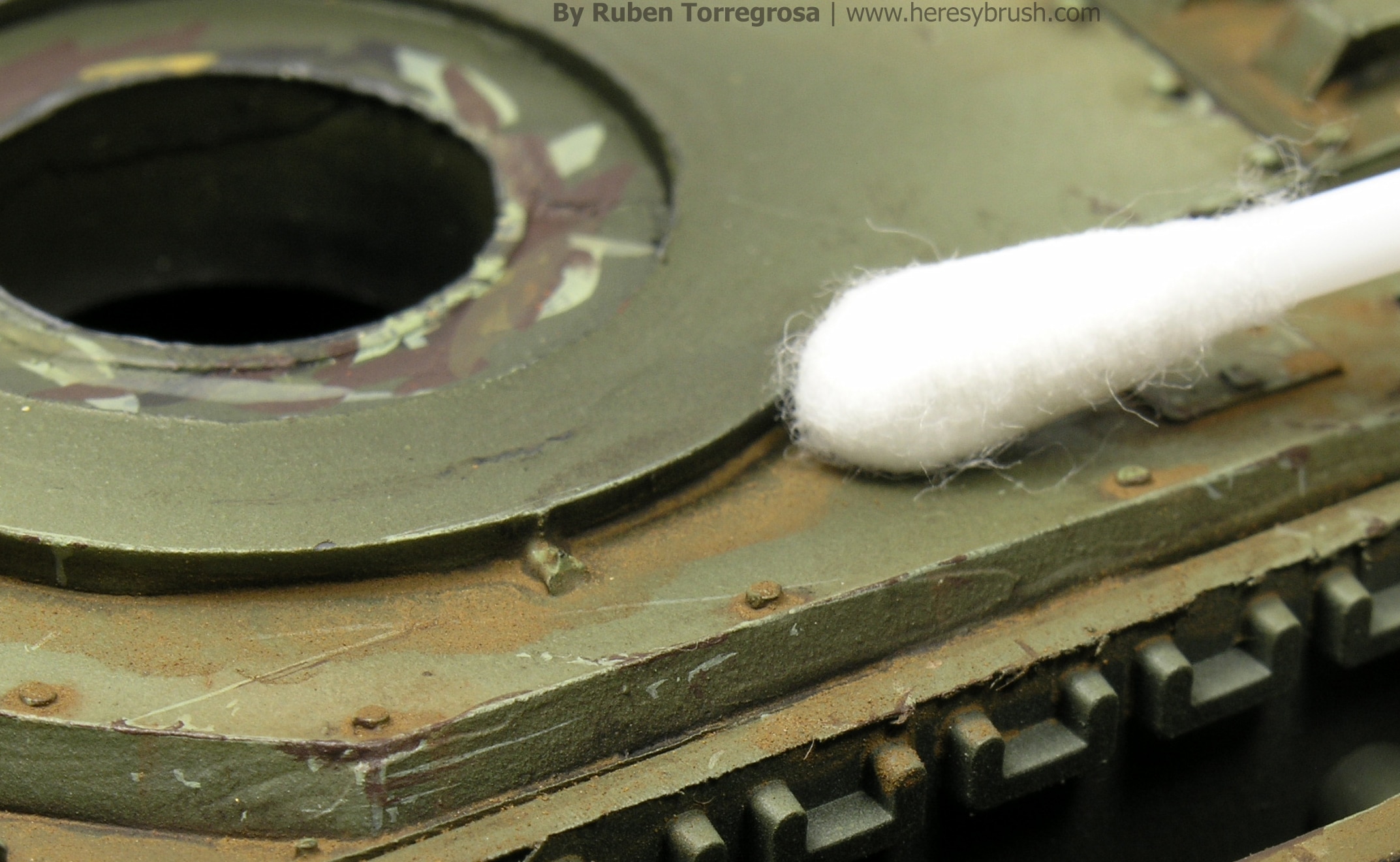
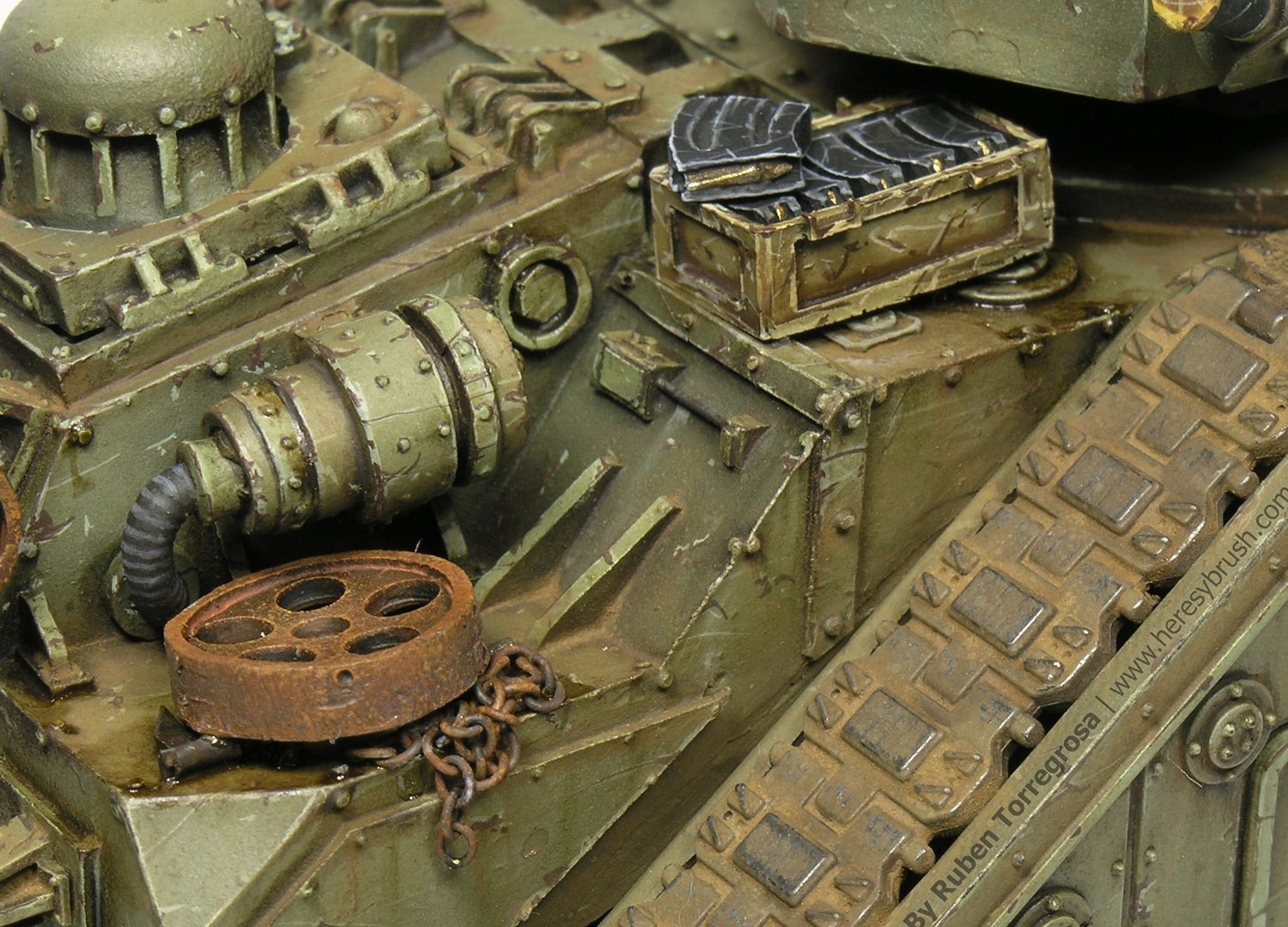
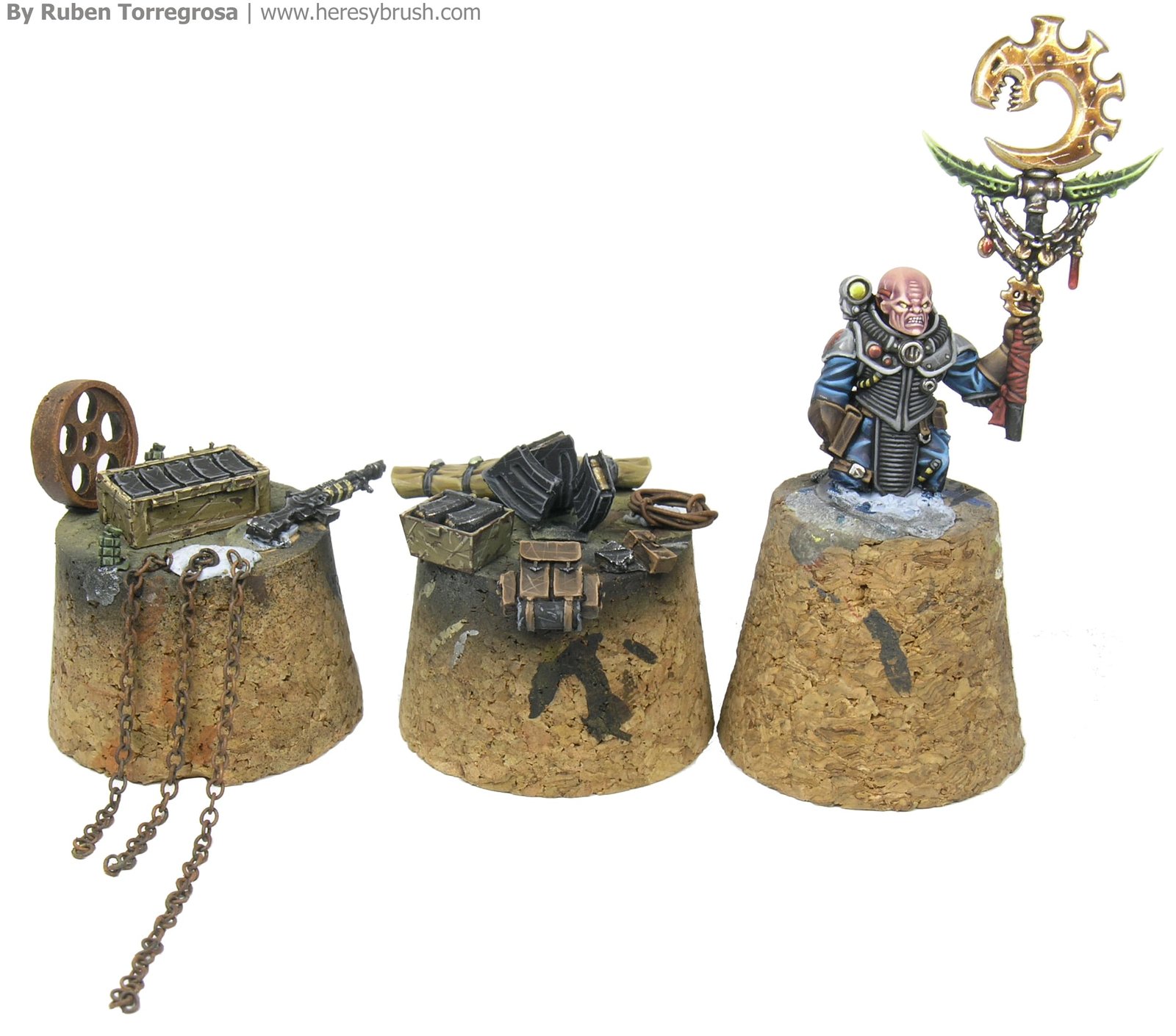
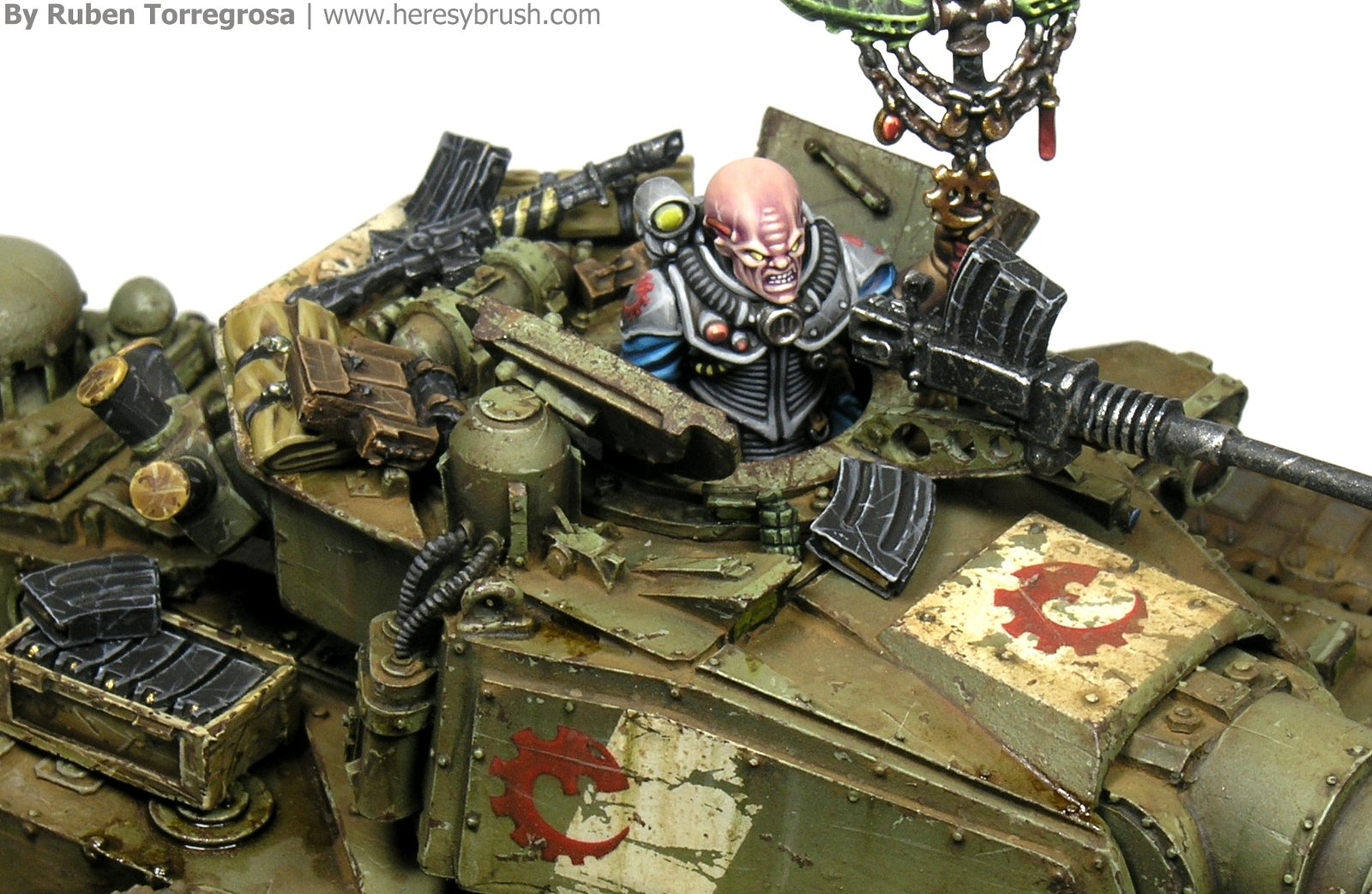
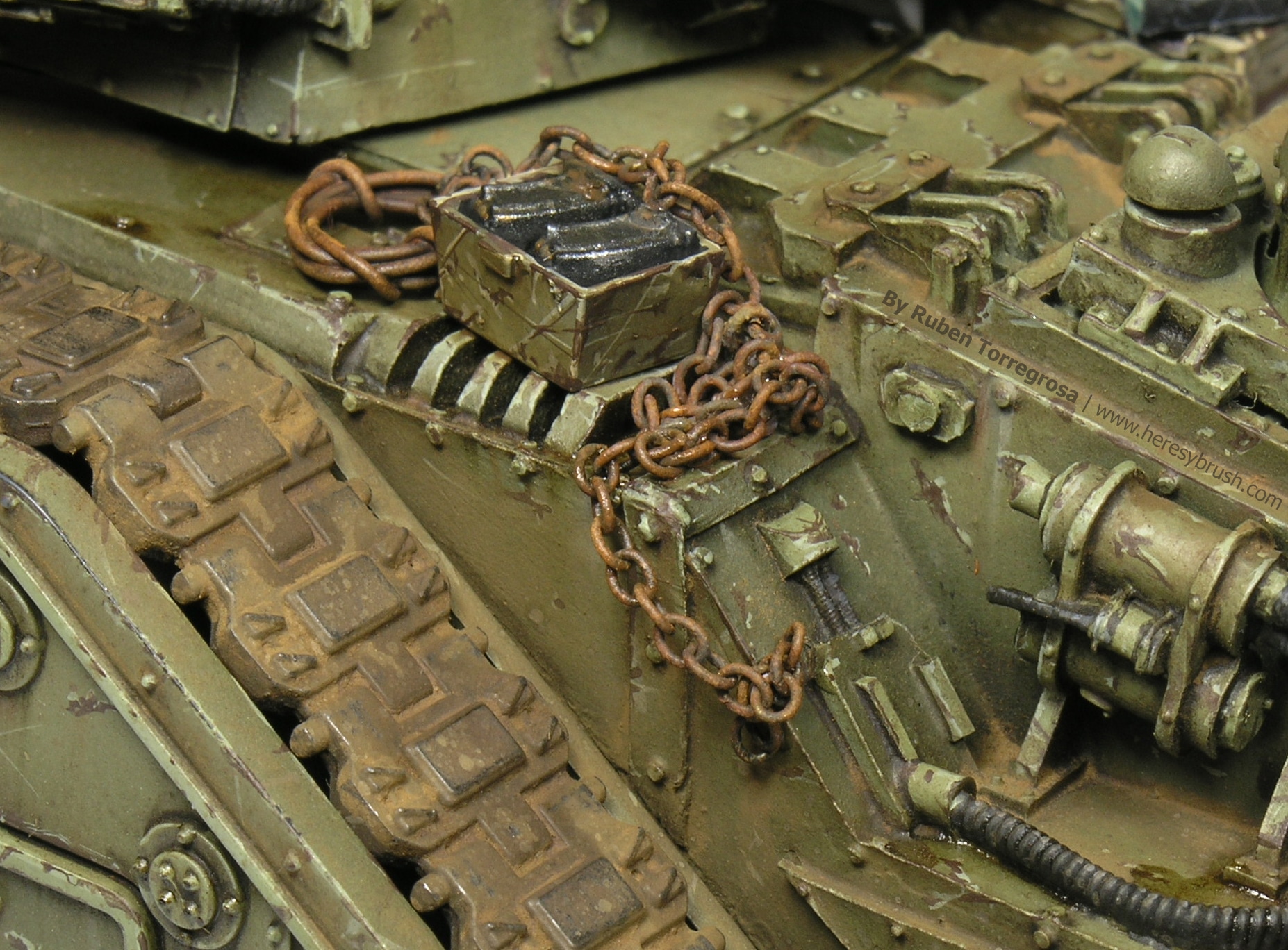
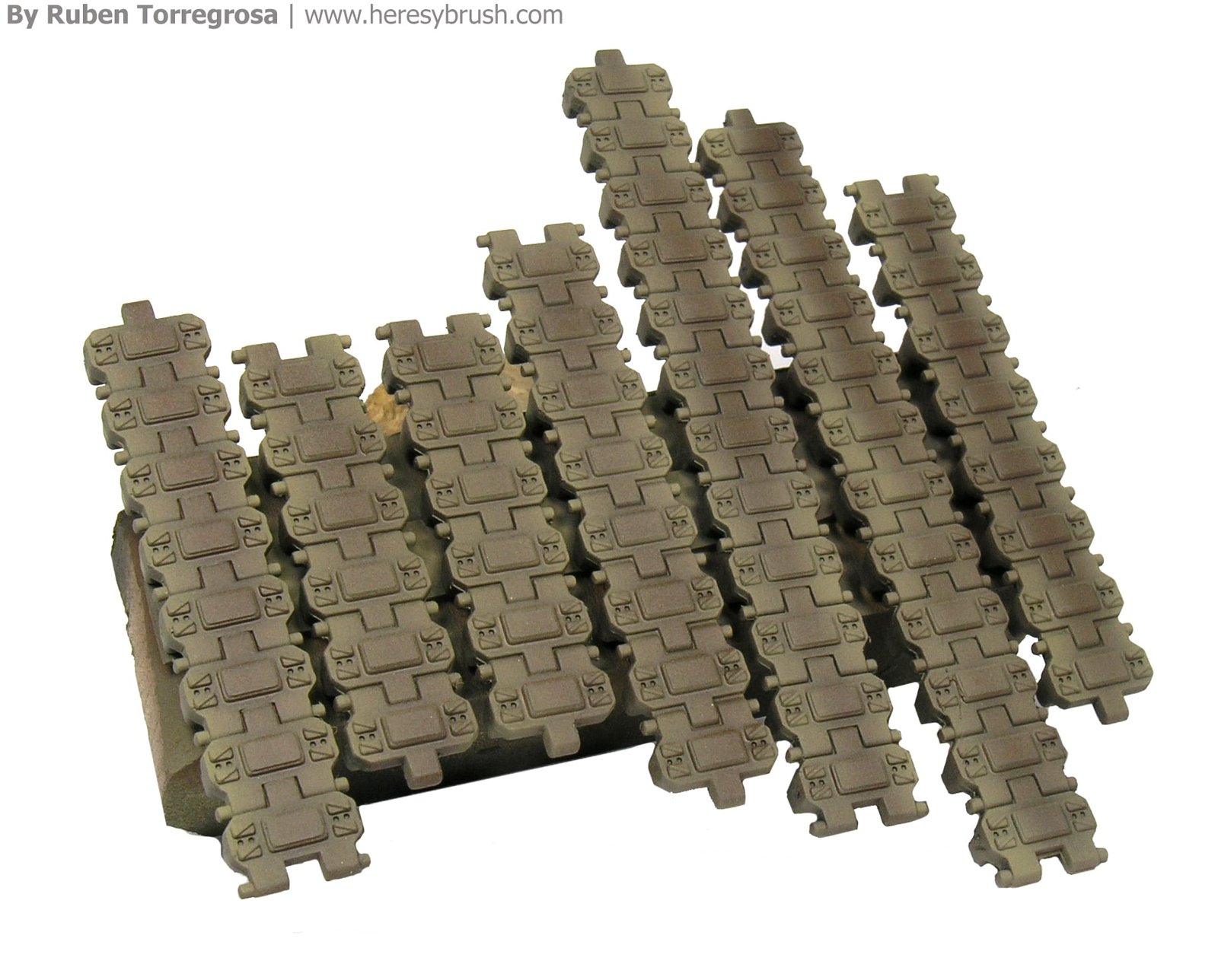
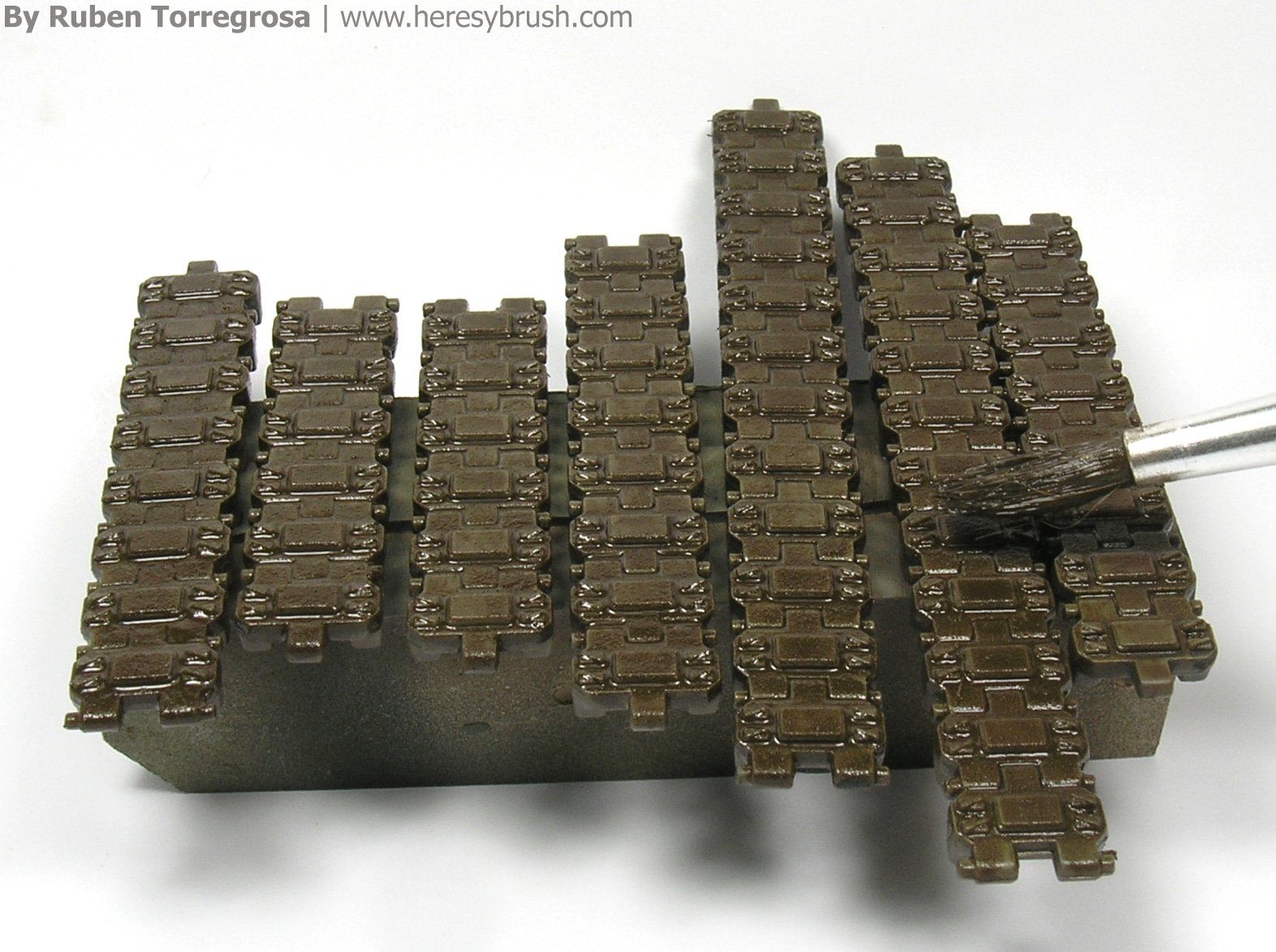
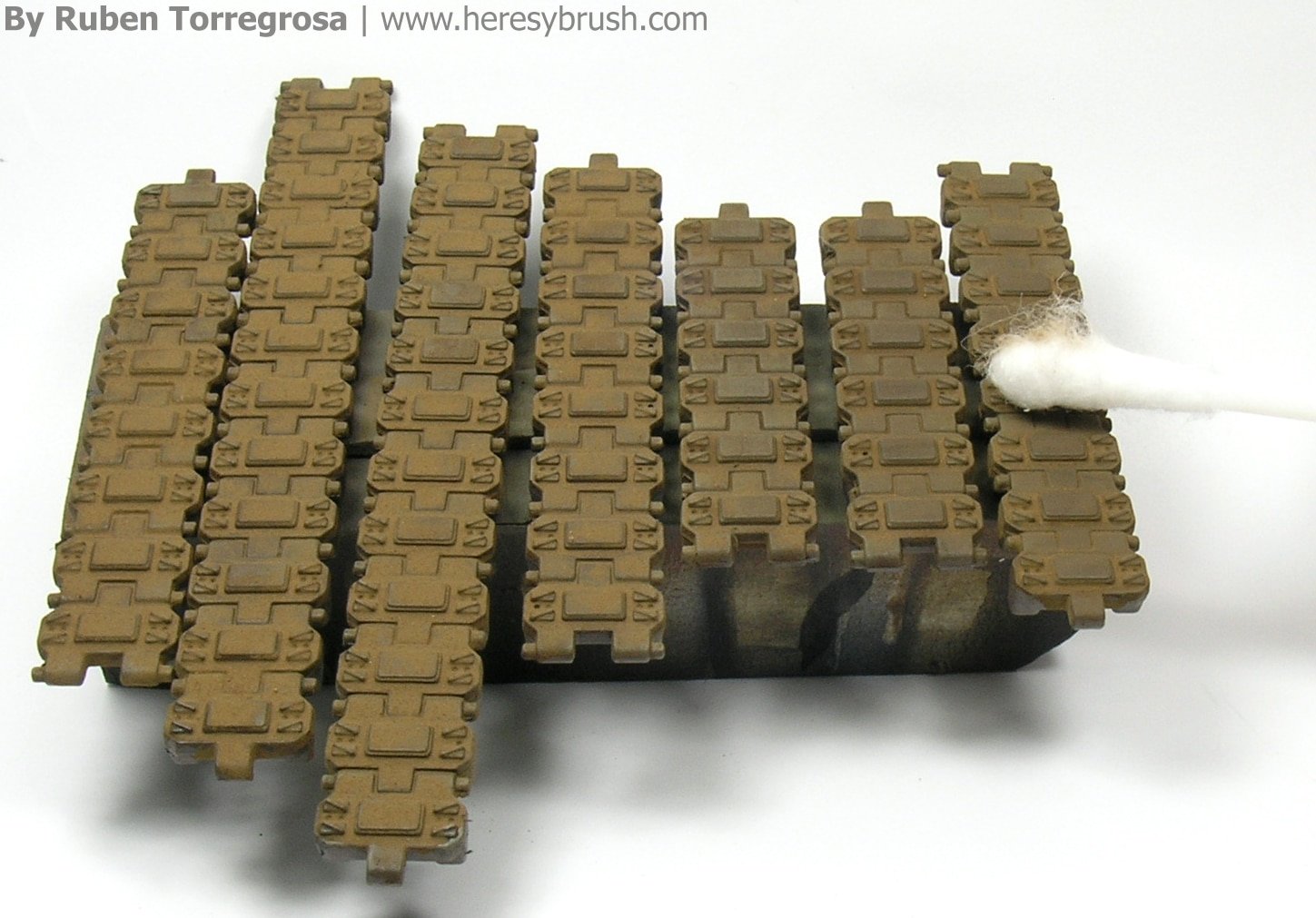
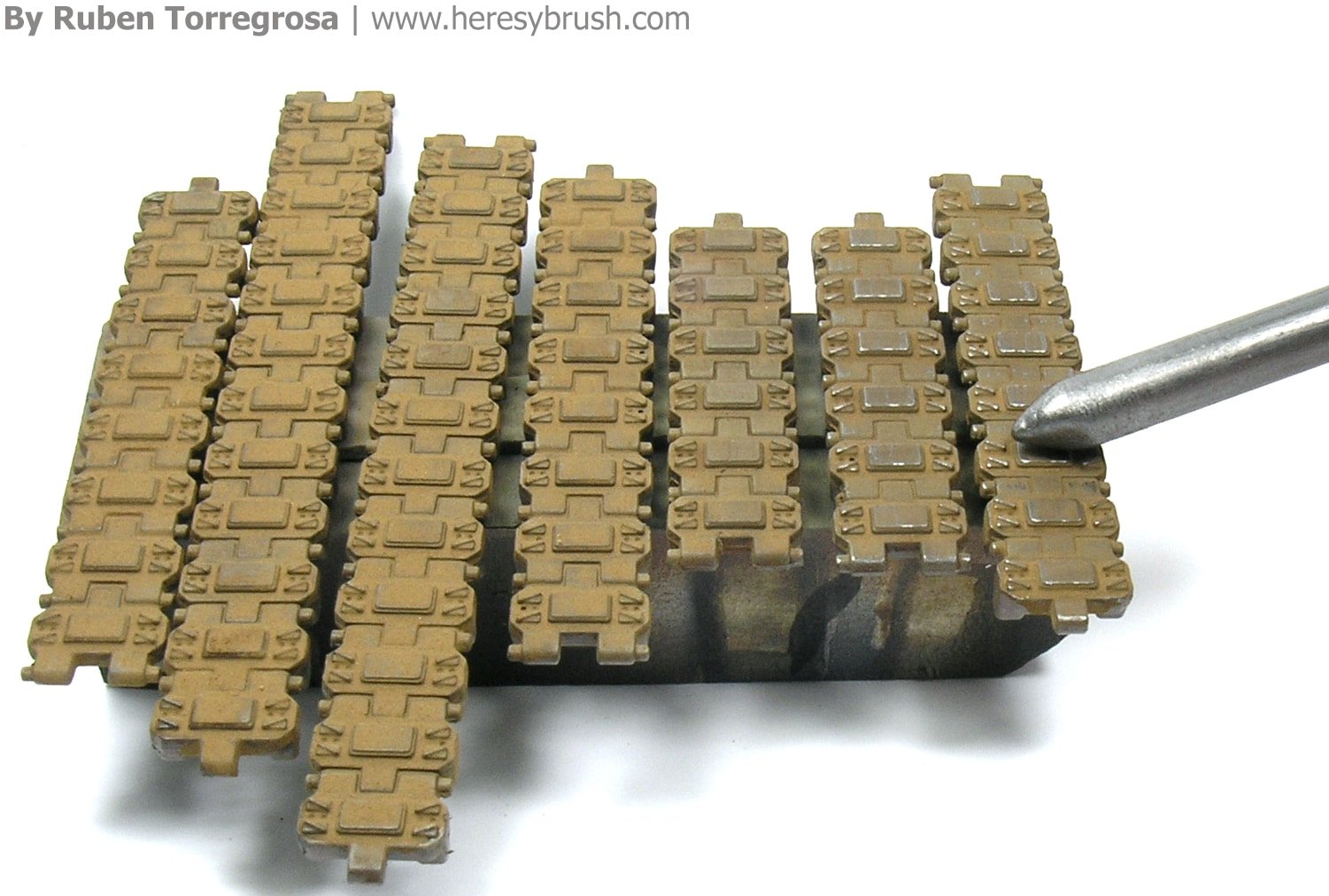
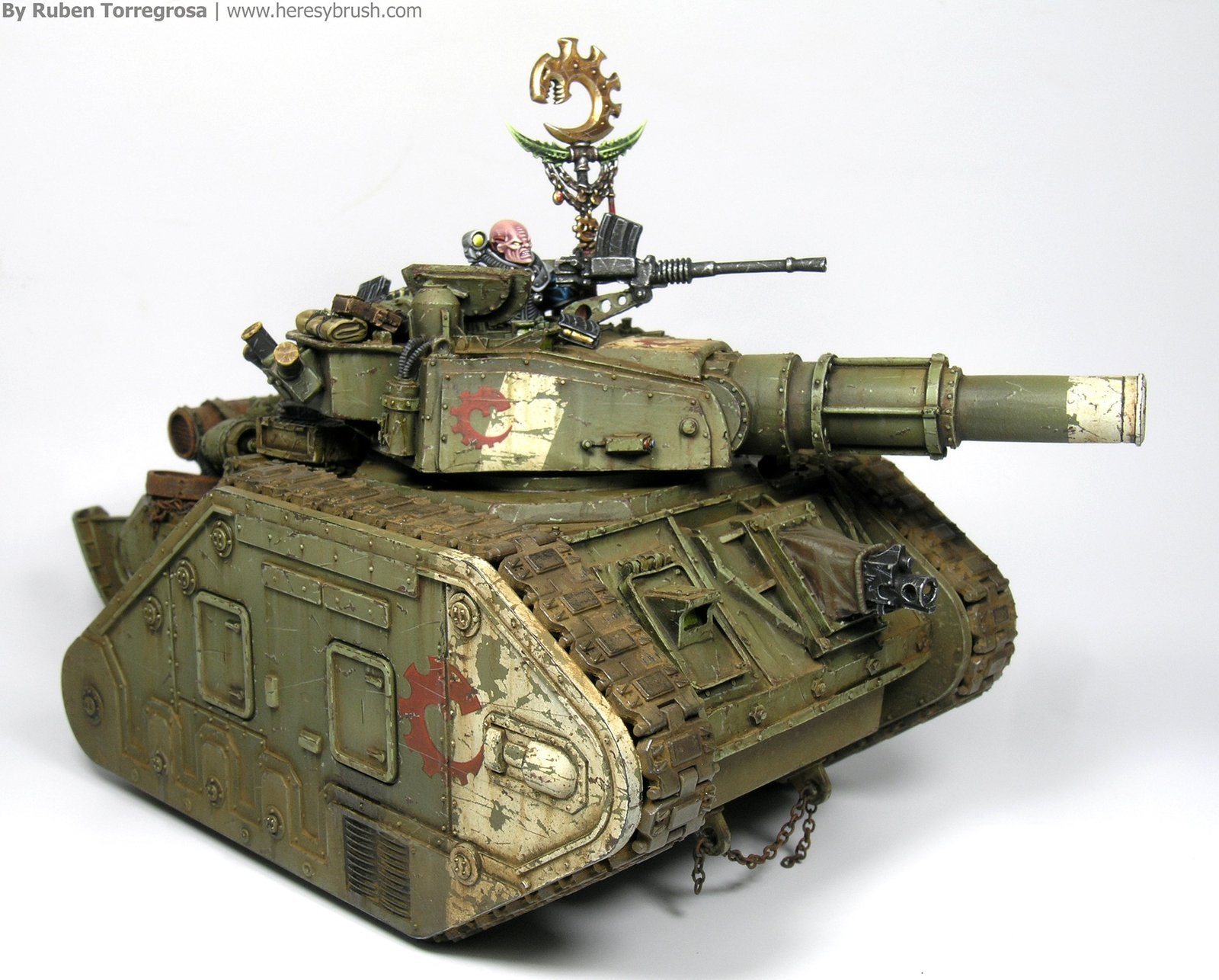
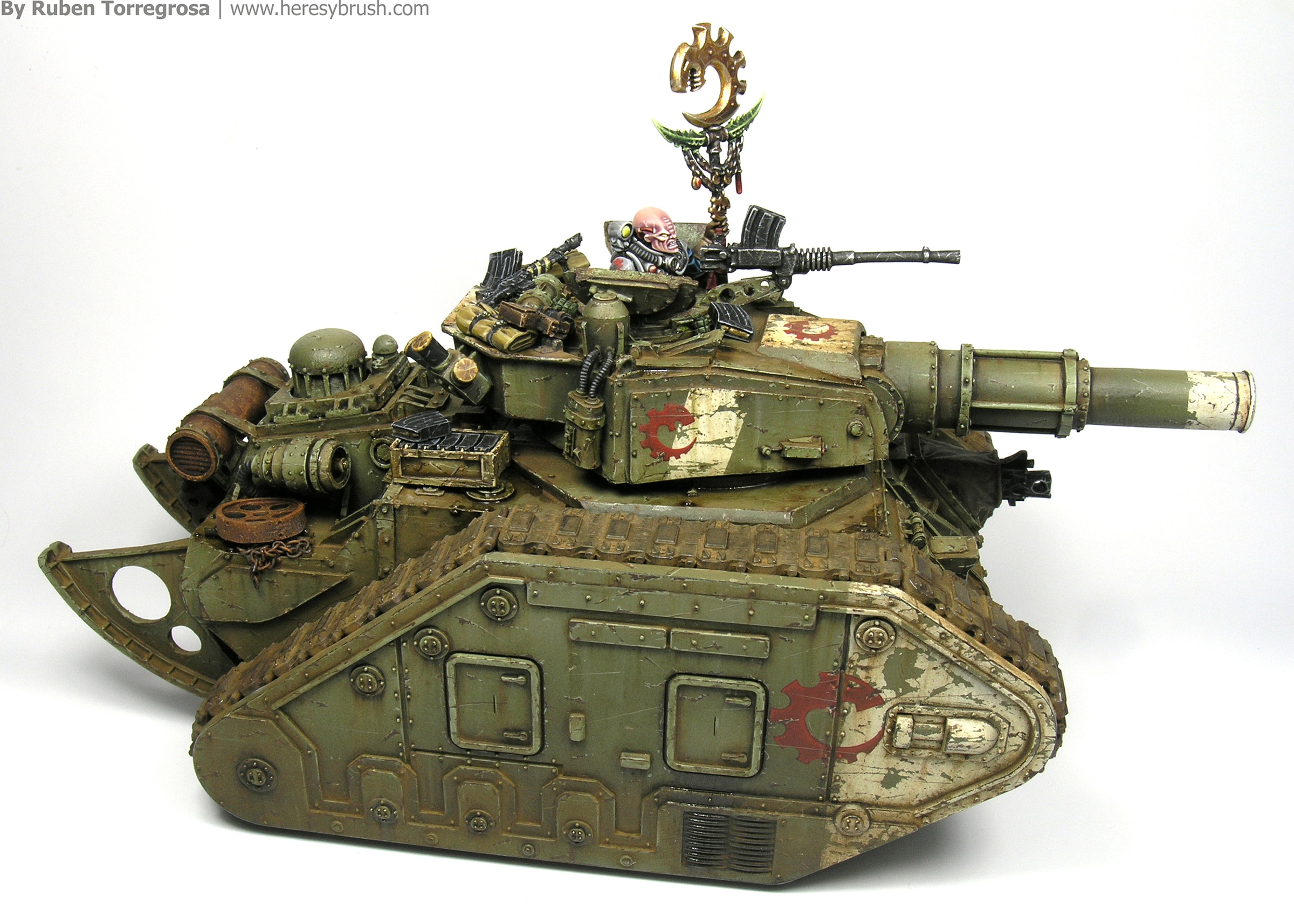
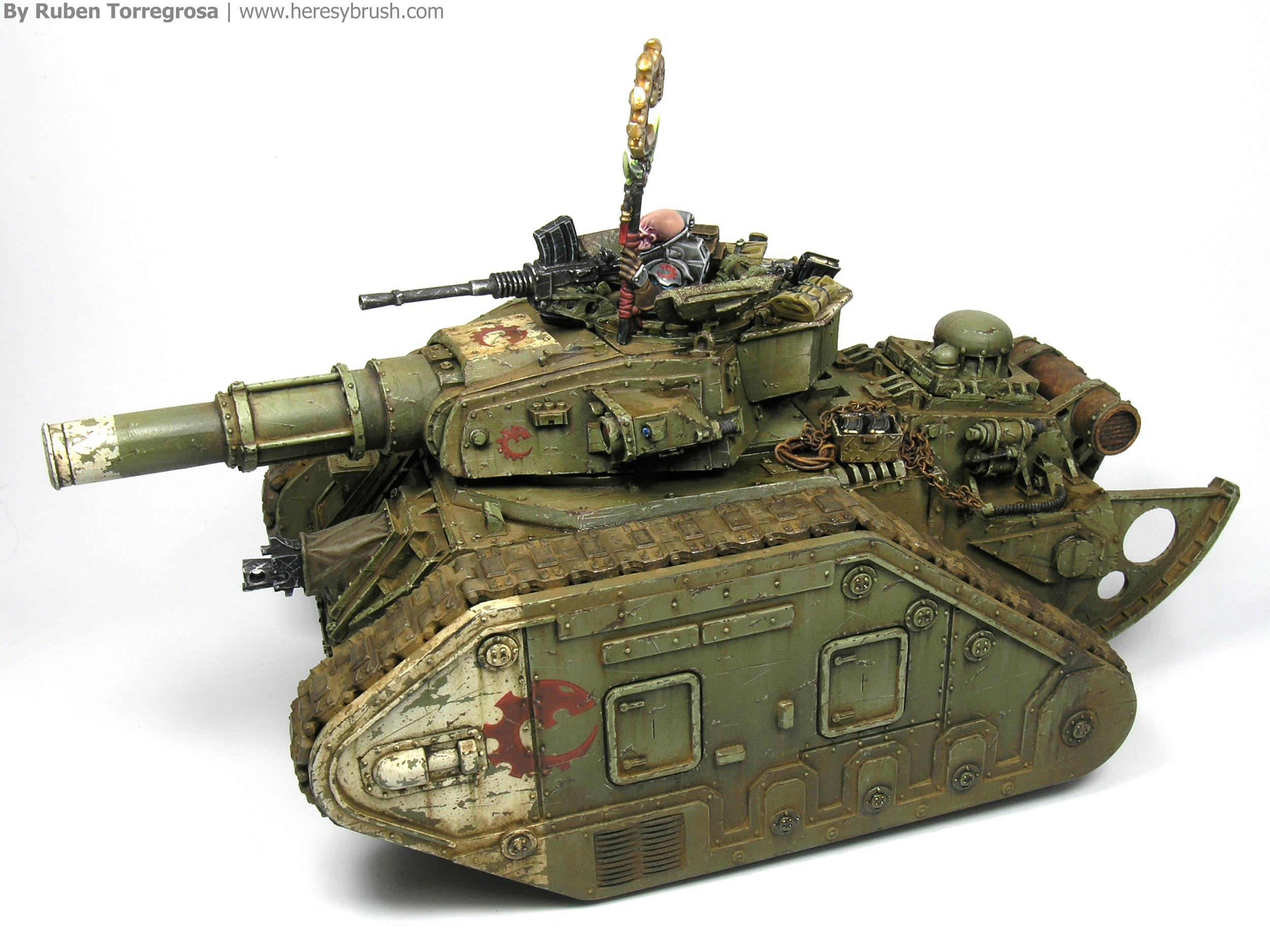
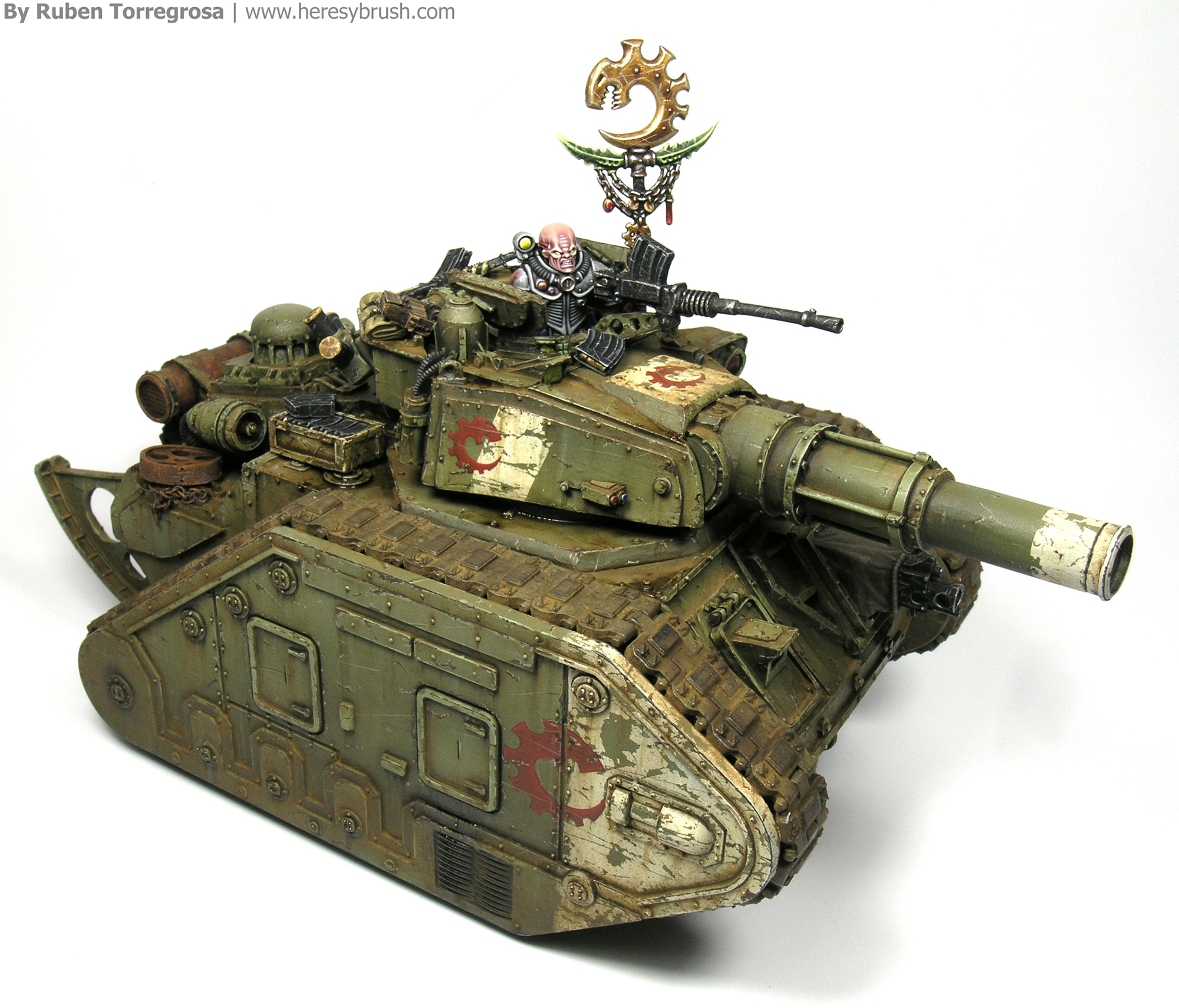
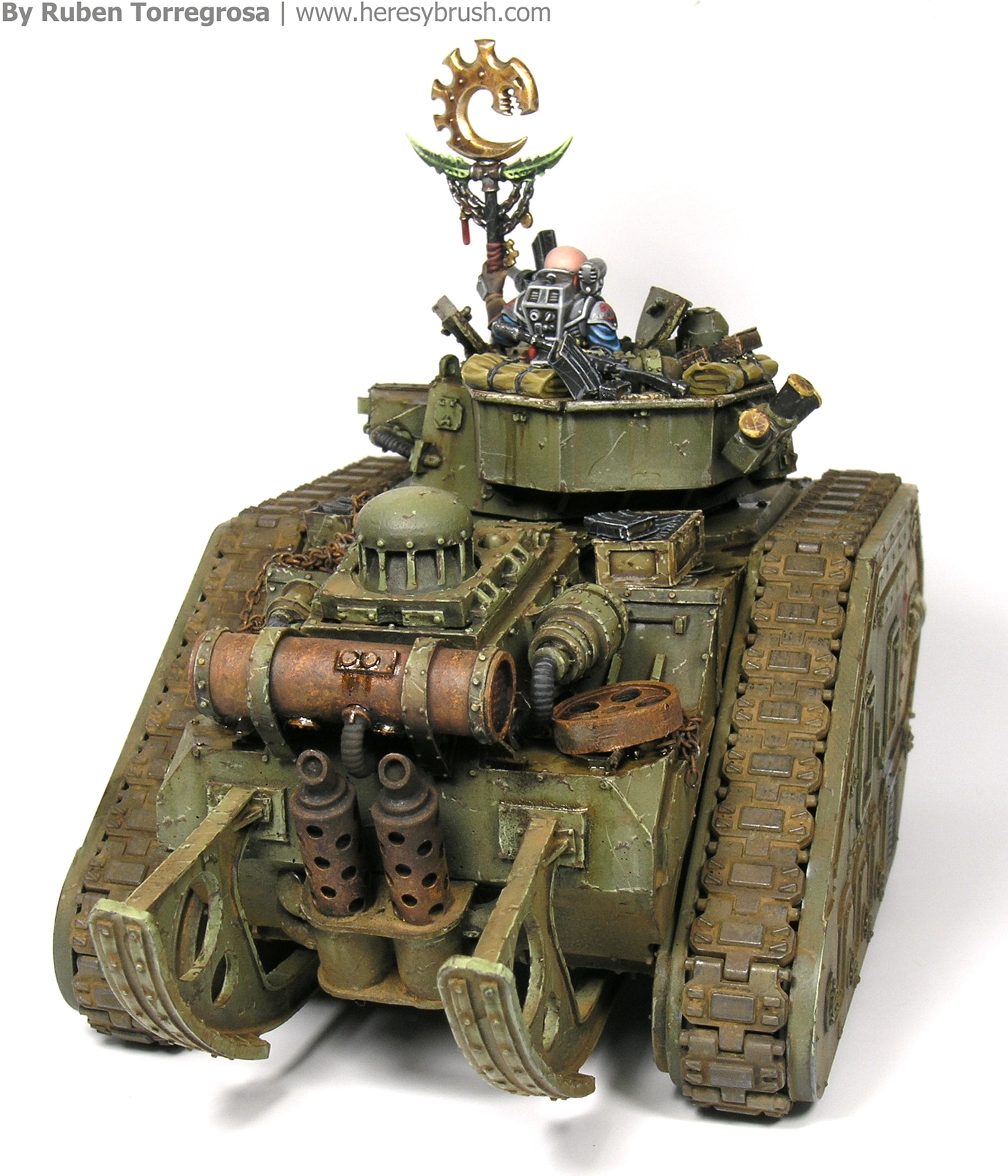
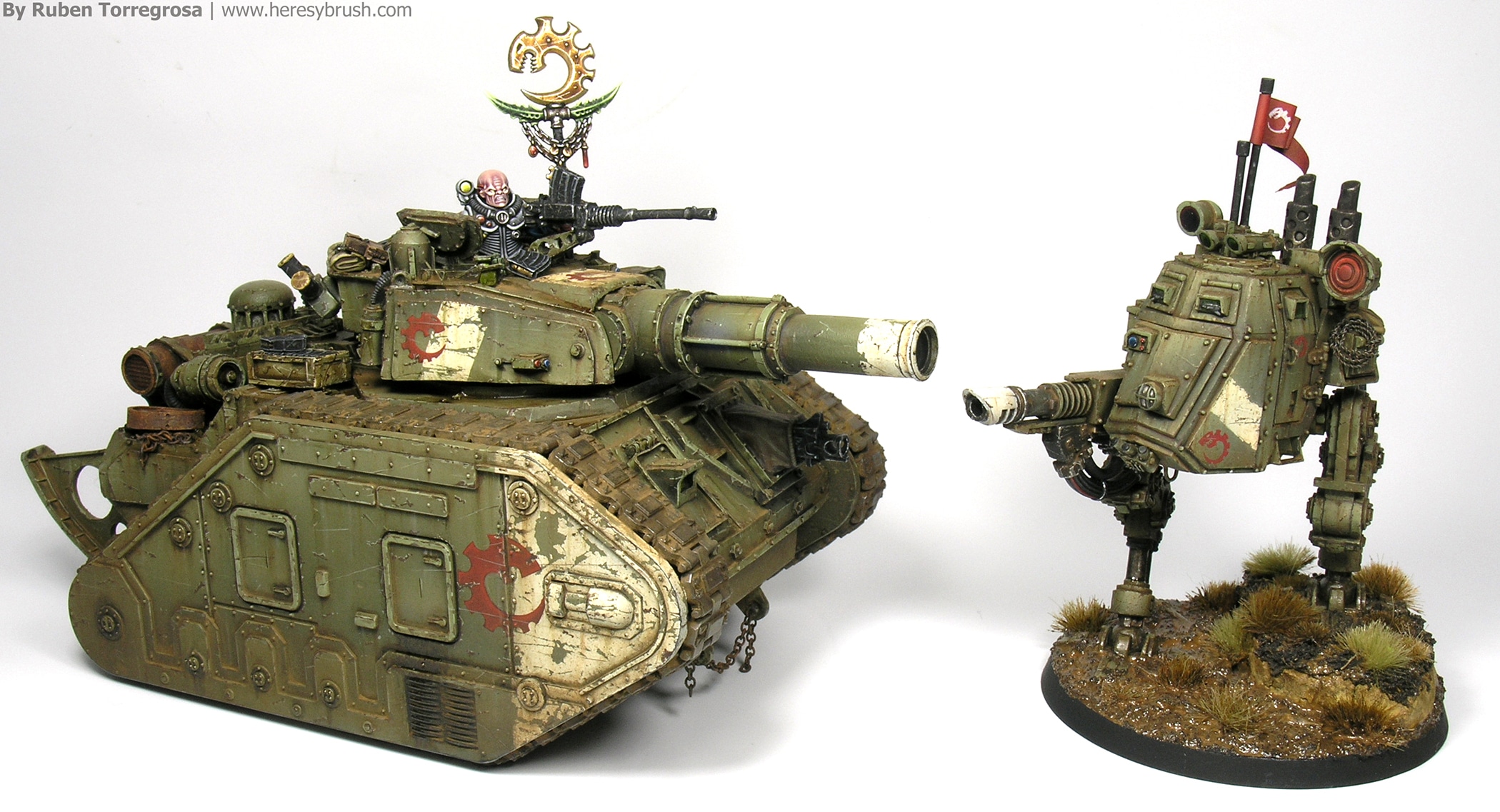
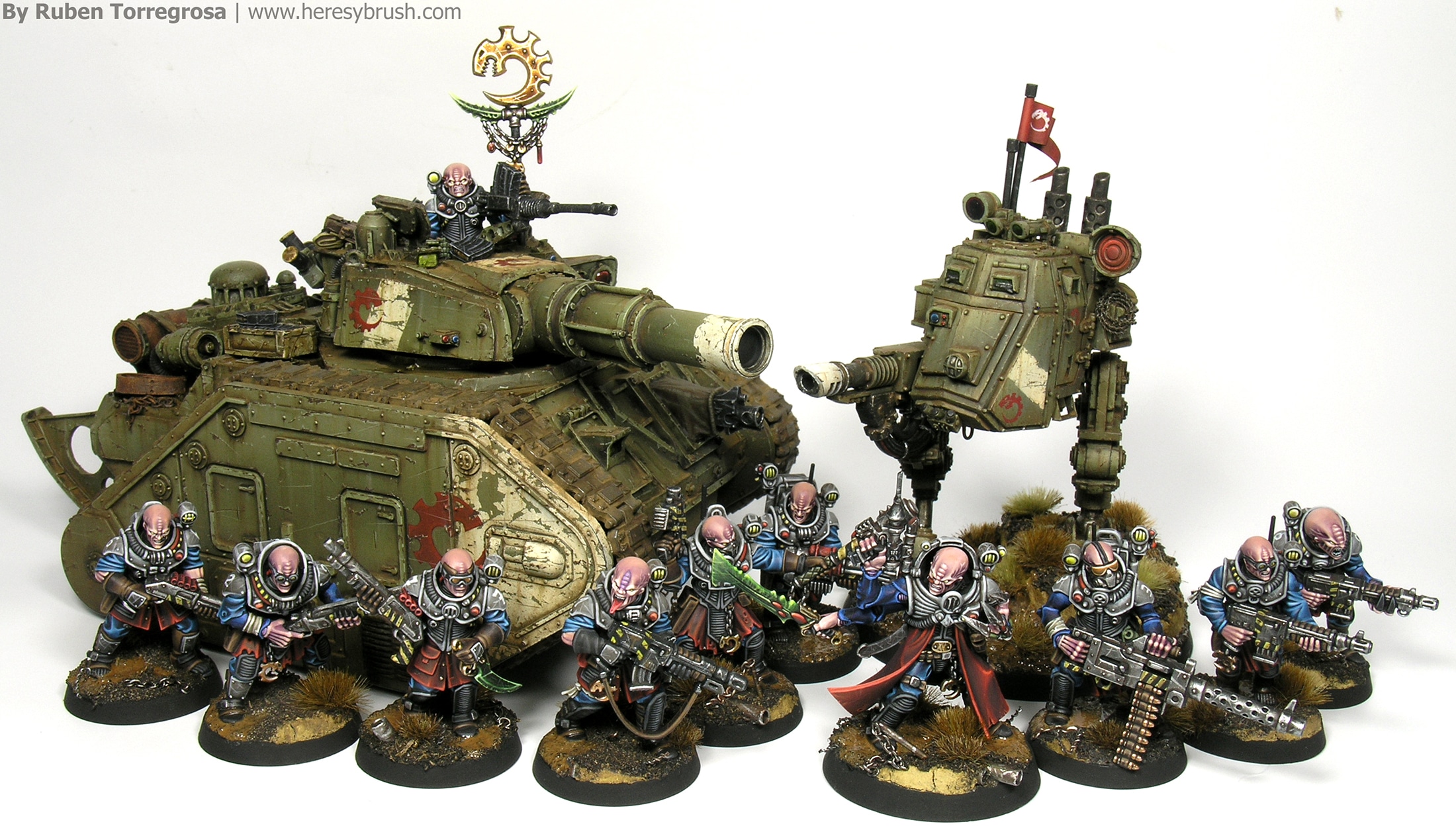
Love this – so many tips I am going to try!
Can I ask where you got those amazing accessories?
Thanks for your comment, Aaron.
The accessories are from Death Korps miniatures from Forge World.
Great article, thank you. It would have been very useful to see pictures of the masking process.
Good point! I will try to cover that part next time (I have couple of artillery tractor Centaurs on the table!)
Woot! That would be great.
Great article and one which I will put to good use on my Death Korps. Out of interest, are the heavy stubber magazines and crates from a 3rd party or are they 3D printed?
Hi Ben,
Thanks for your comment! Good luck with those DKK tanks:)
The stubber magazines are actually from Forge World. They belong to a DKK heavy stubber team. But I guess that you can find nowadays similar magazines for 3D printing. Have a look at the WWII German anti-aircraft guns, such as the 20mm one.